Continuing where I left off with our two weeks in China…
Day 6: Train to Chengdu, Tianfu Square & Kuanzhai Alley
On Thursday morning, we had a very early start and made our way to Beijing West station for the 7am to Chengdu East. The process of buying tickets was a little strange: they technically go on sale only two weeks beforehand, but Trip.com will take your money and try to snag it once it’s available, with multiple fallbacks in case your first choice is unavailable. Fortunately, we got 1st class tickets on one of the fastest of the five daily high-speed trains, which range between 7½ – 11½ hours to cover the roughly 1850km (1150 miles) distance.
Incidentally, Amtrak’s meandering route from New York to Chicago is actually about the same distance. Riding one of its three trains a week will take about 27½ hours, if it runs to schedule.
Like every other station we travelled through, Beijing West was large and well-organised. For breakfast we discovered that ‘tea eggs’ are a thing – think a hard-boiled egg, but boiled in tea – which is something we should absolutely do. But even more impressive is the fact that Chinese trains allow you to order food delivery to your seat! This was implemented a few years ago after complaints about the railway’s onboard monopoly. So now, in addition to ordering from the train itself, the official railway app – which, like everything else, is actually just a mini program within AliPay – allows you to order from a long list of participating restaurants as well. At your chosen stop, your meal is brought onboard and delivered to your seat by the train staff.
Honestly, I expected that the train itself would be infuriatingly fast and smooth, which it was. I expected that I’d be able to look out the window and see intensive road or apartment construction rather than stagnant land, which I did. But I wasn’t quite ready for the fact that China has the world’s best, fully-integrated system for market-based food delivery on a bullet train moving at 250km/h. It’s a perfect example of where China chooses to put its layer of commercial competition: at the perfect place to fully leverage its fantastic public infrastructure.
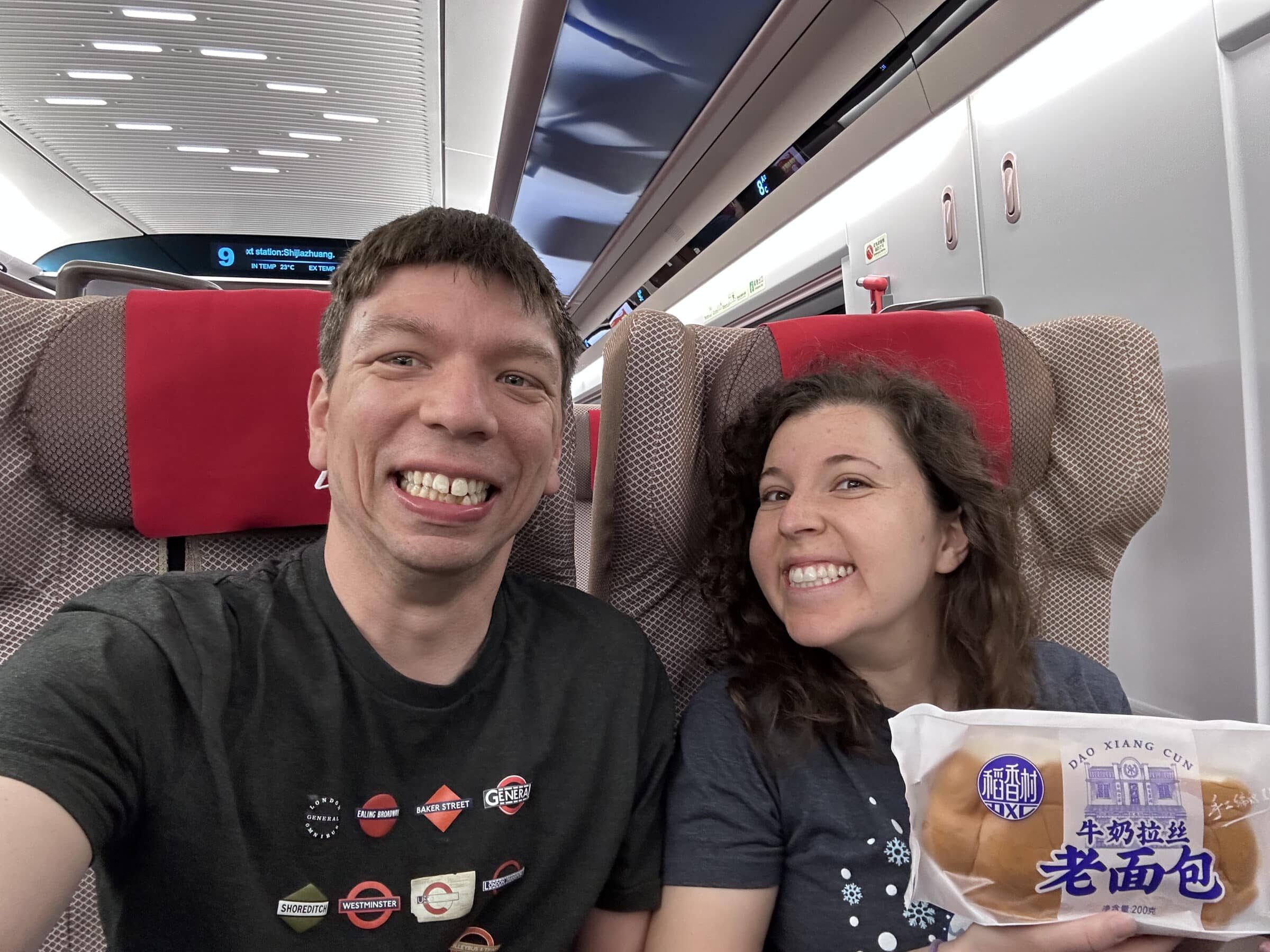
So then: Chengdu! This city is the capital of the Sichuan province in Southwest China, with warmer temperatures than Beijing, and is known for having a relaxed and laidback vibe. This is certainly true in general, although my immediate impression when getting off at the busy station (perfectly on time) was that this was more like the China I had been imagining: more people, more bustle. We took the Metro (which didn’t exist until 2010, and now has 15 lines) to a stop 10 minutes from our hotel, and the contrasts with Beijing only got bigger. The urban landscape is just massive, with tall buildings not just clustered in a central business district but stretching as far as the eye can see, although that’s not as far as the eye might be able to see without the pollution, mind. We’d also picked a very different hotel from Beijing, opting for the 5* luxury vibe with magnificent views over the city.
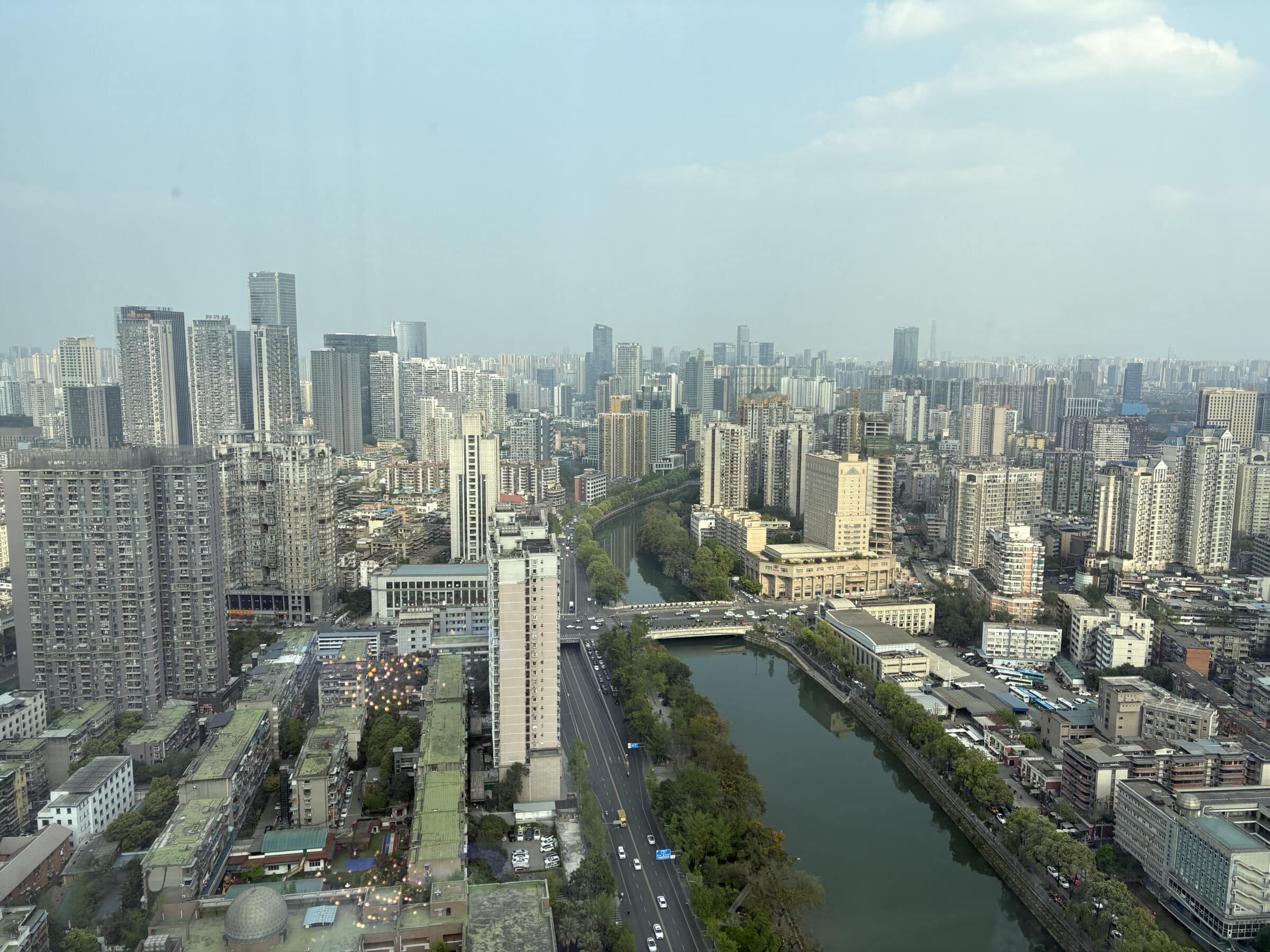
Our hotel was in a perfect spot by the river and only a short walk from Tianfu Square, another giant public plaza with a shopping centre/metro station cut into the ground beneath, and all carefully guarded by a giant Chairman Mao statue looking on. We returned here a lot for meals over the next week, but on our first night we ventured a bit further out to the famous Kuanzhai Alley, enjoying dinner on little tables outside.
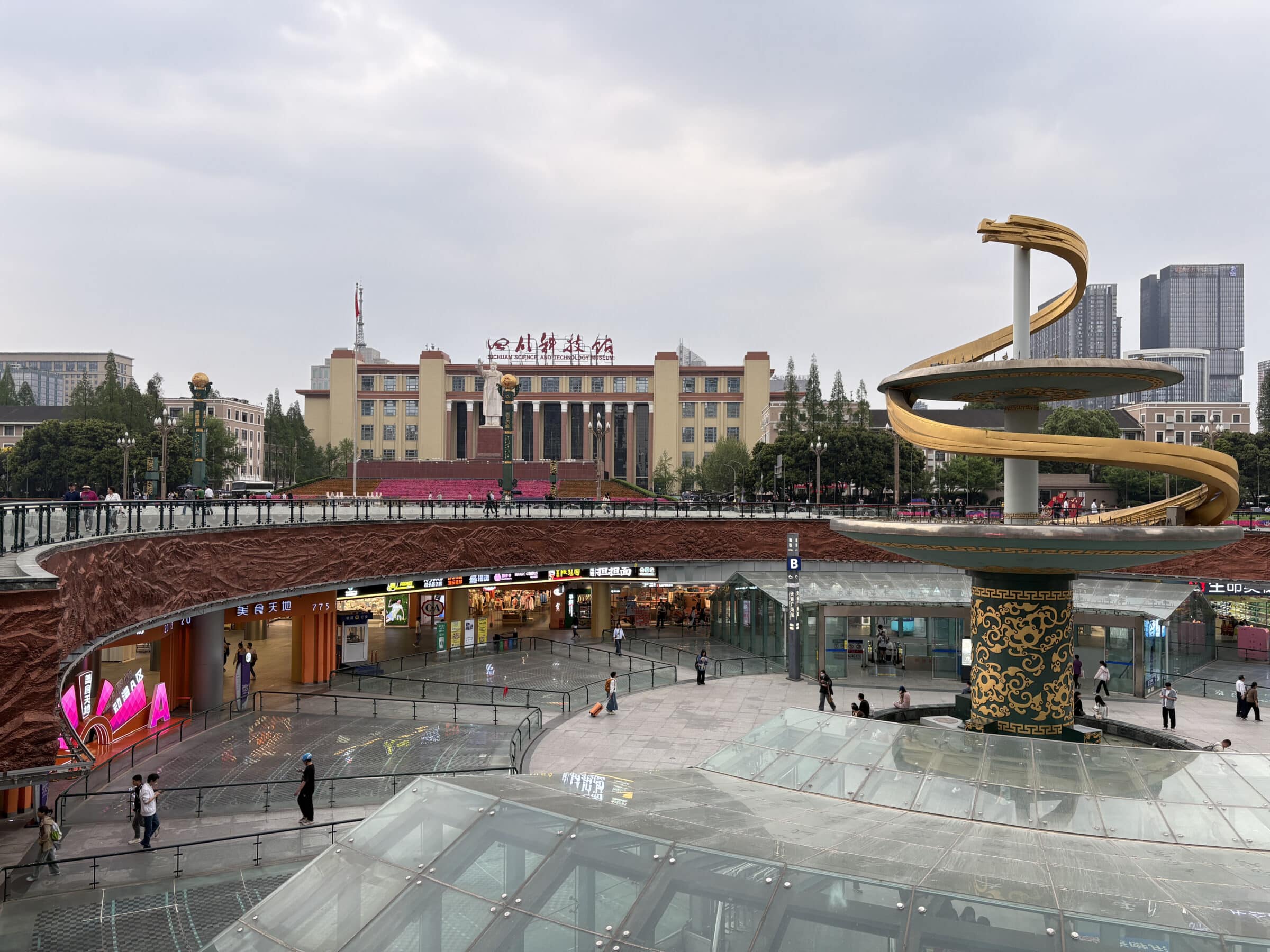
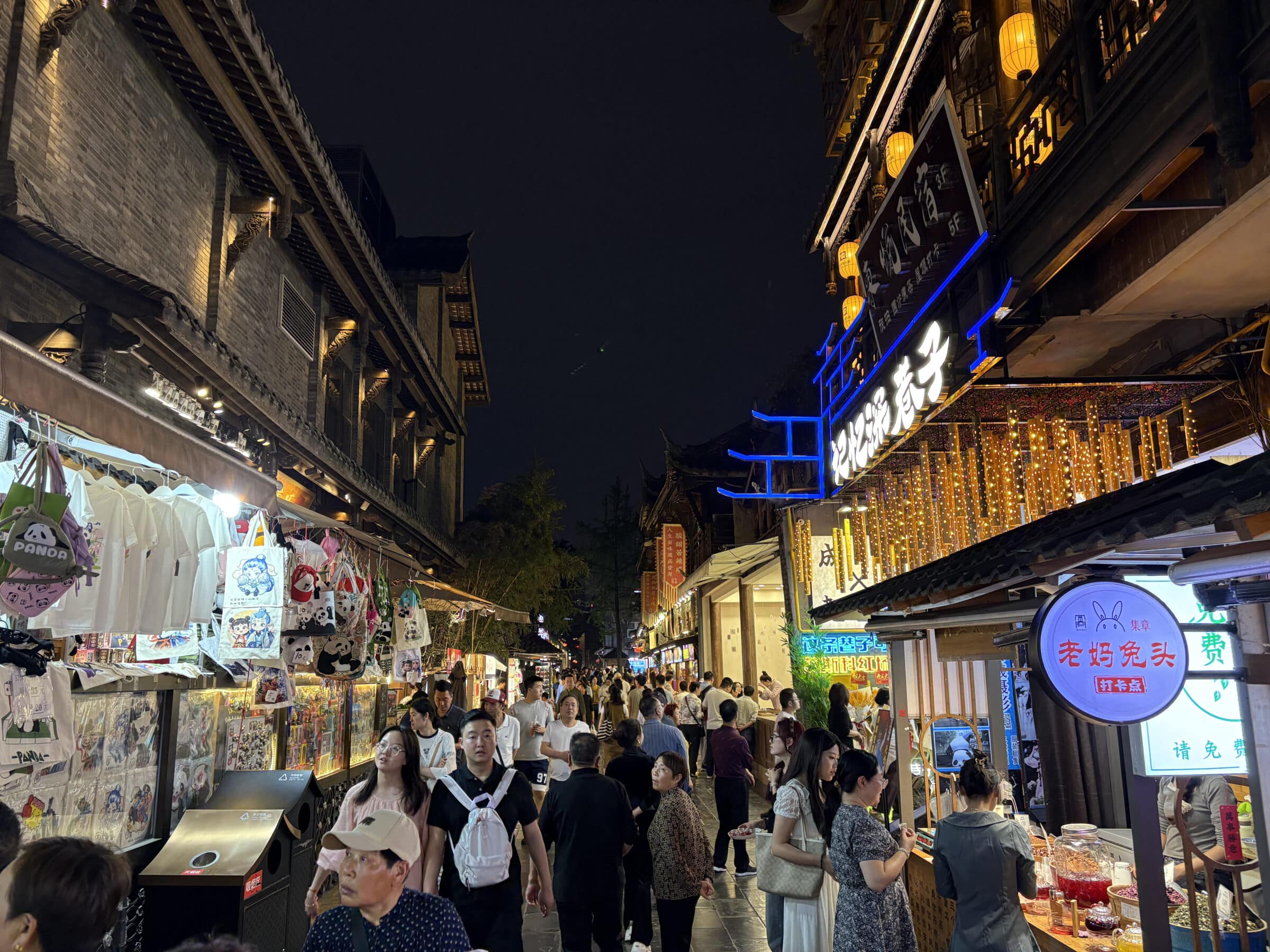
Day 7: People’s Park & Food Tour
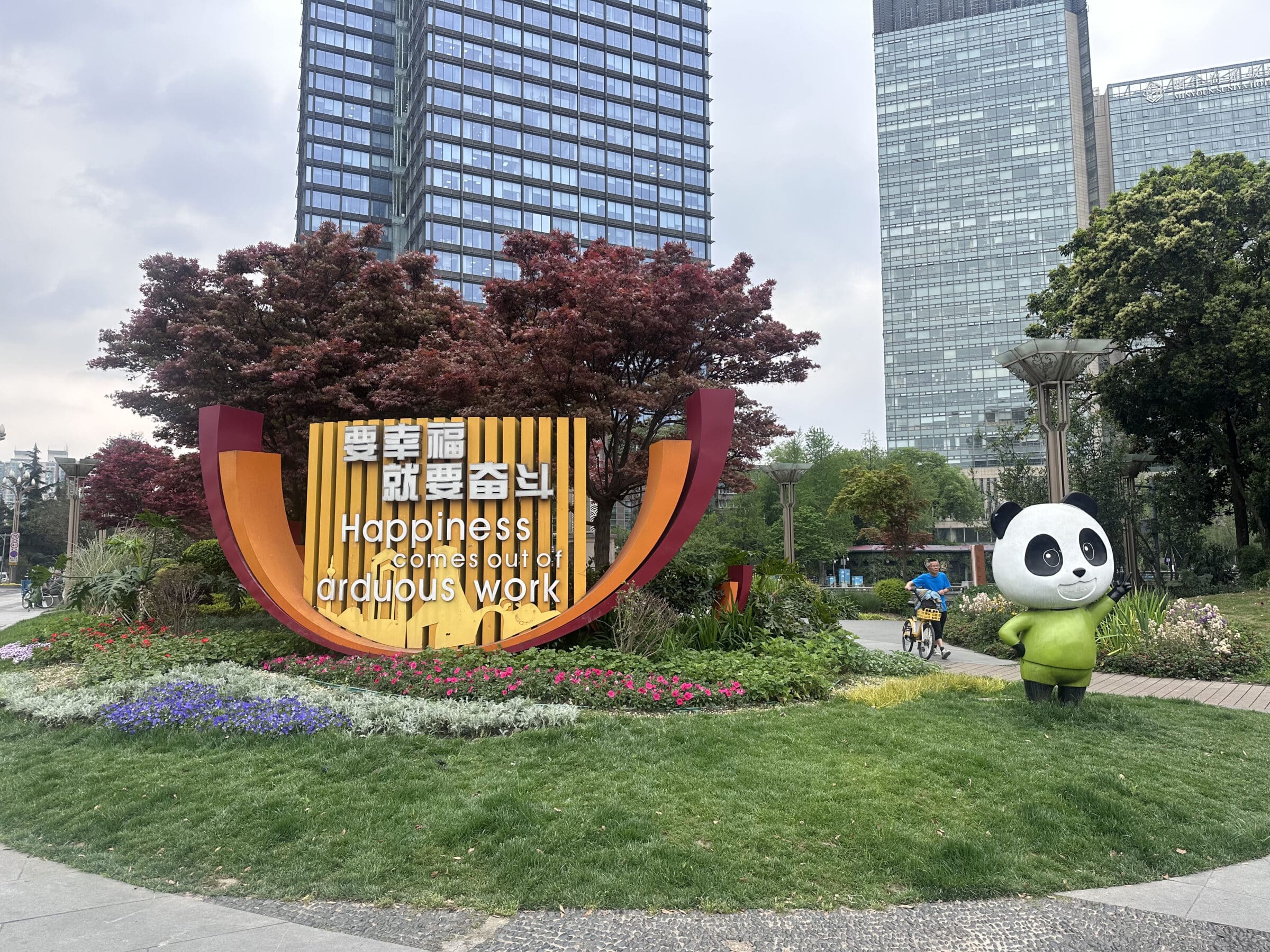
The next day we headed to People’s Park, a large park in the centre of Chengdu with lots for the people to see and do including boating on the lake, food stalls, public music and dancing, or sharing tea and playing mahjong together. (In general, everywhere you look in Chengdu you’ll see serene-looking retired people sitting in the sun and playing cards.)
Because we’re weird, our favourite feature of the park on our first visit was the series of security-themed sculptures (data security, biosecurity, security in space, etc.). Elsewhere there are war memorials to commemorate resistance against the “Japanese devils” (not my language) and a series of historical displays explaining that national security is “entering a new era” and that “if our party wants to consolidate its ruling position and unite and lead the people to uphold and develop socialism with Chinese characteristics, ensuring national security is the top priority”. It’s not only teatime in the People’s Park.
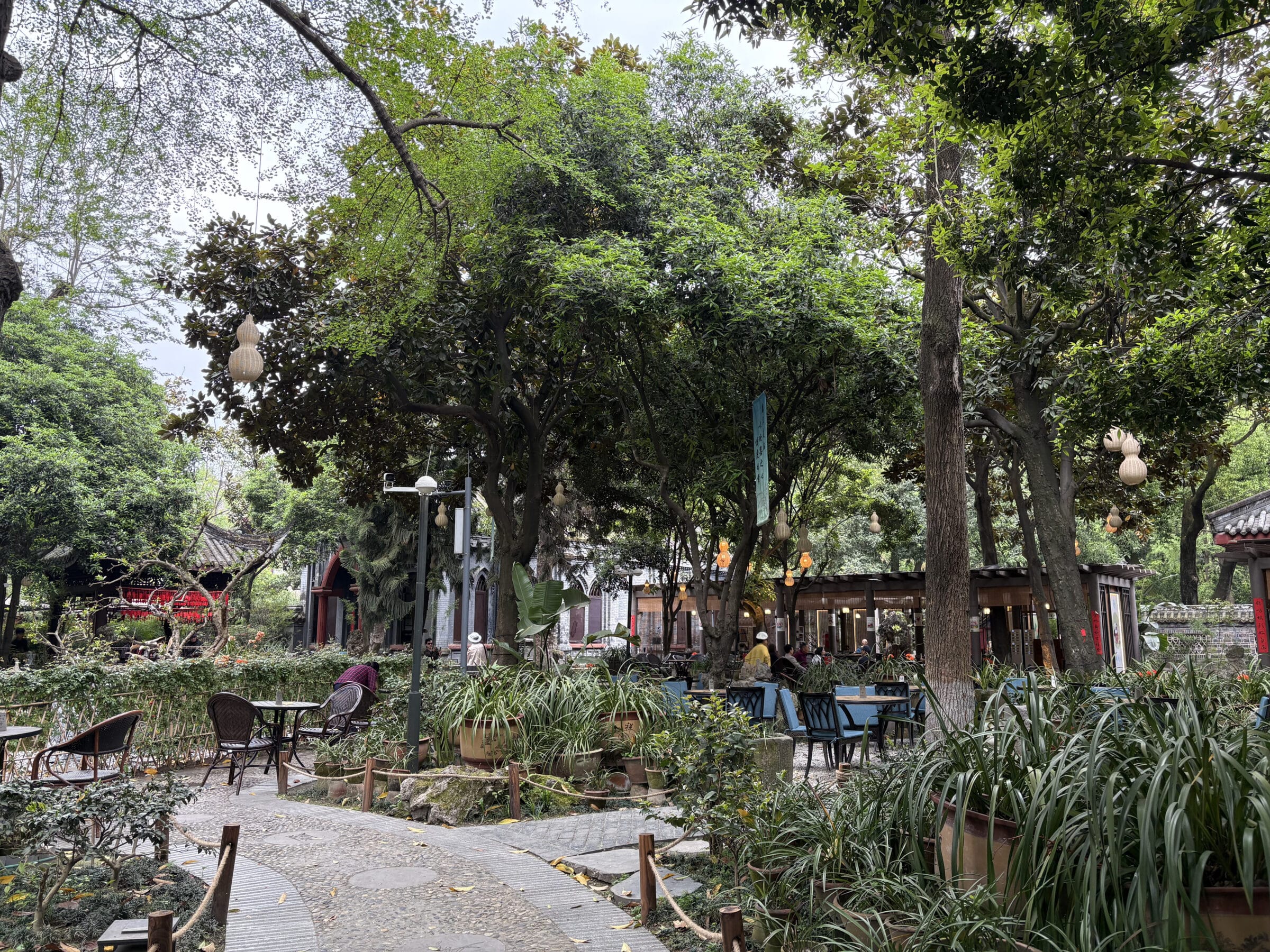
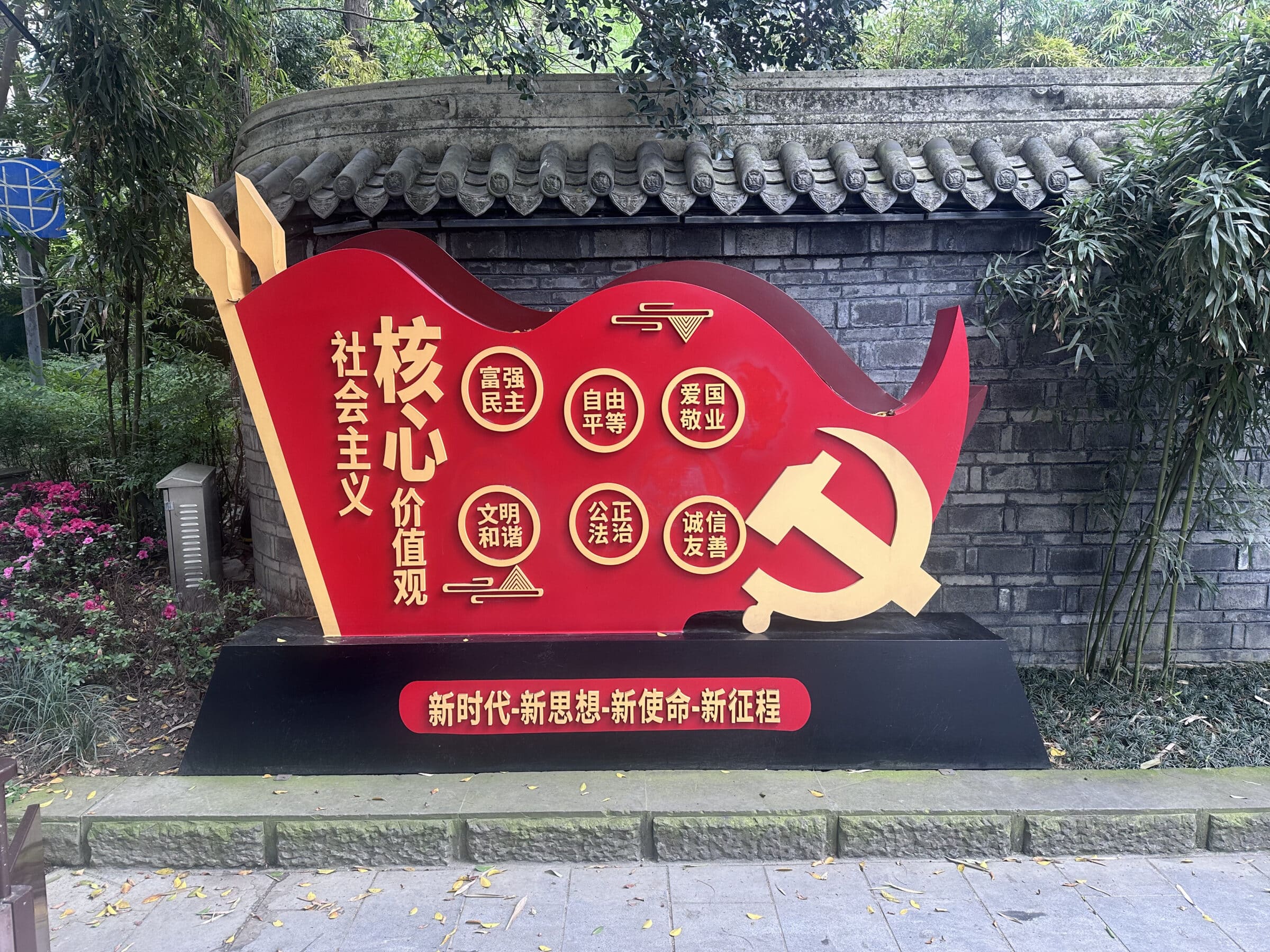
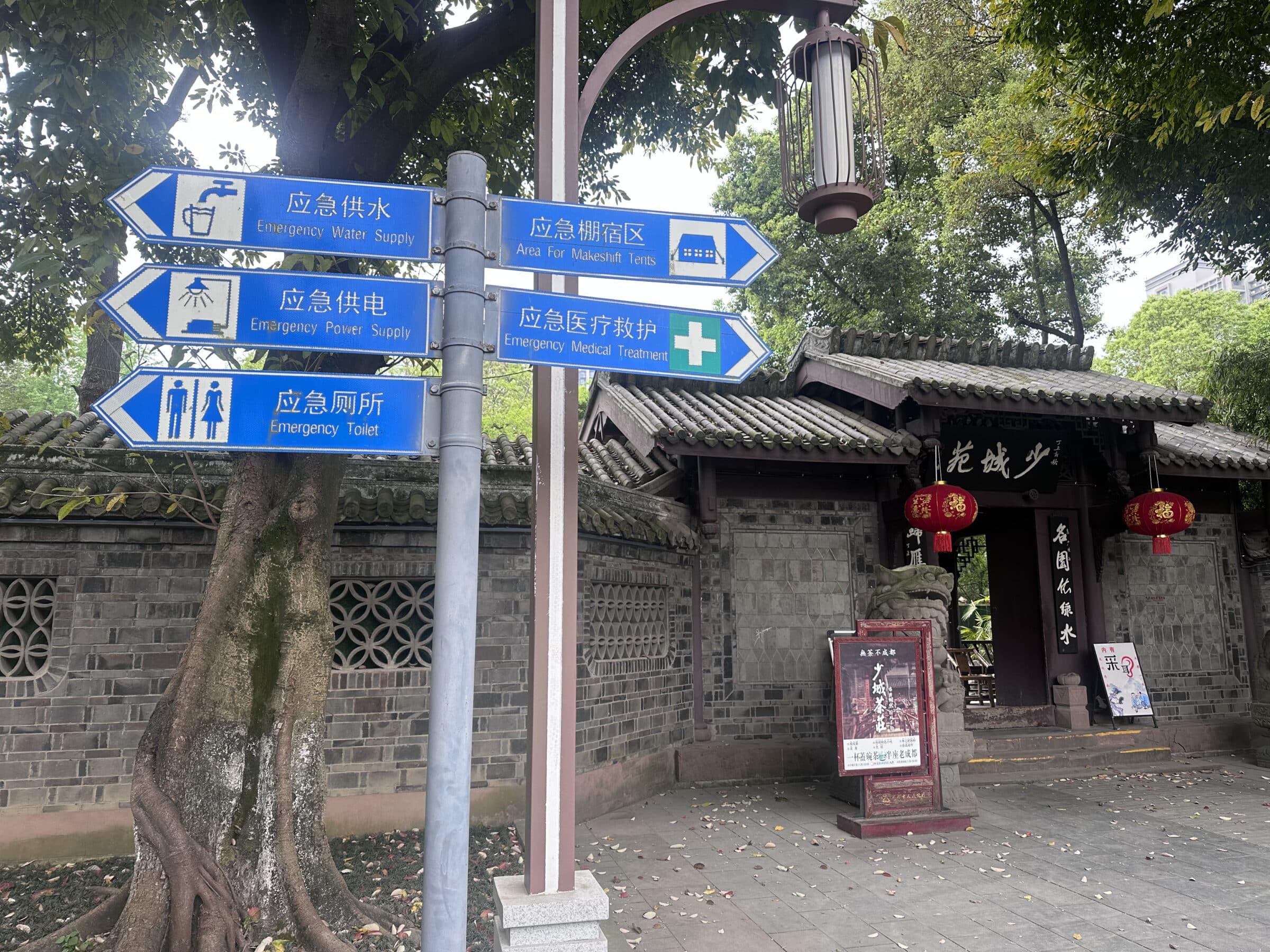
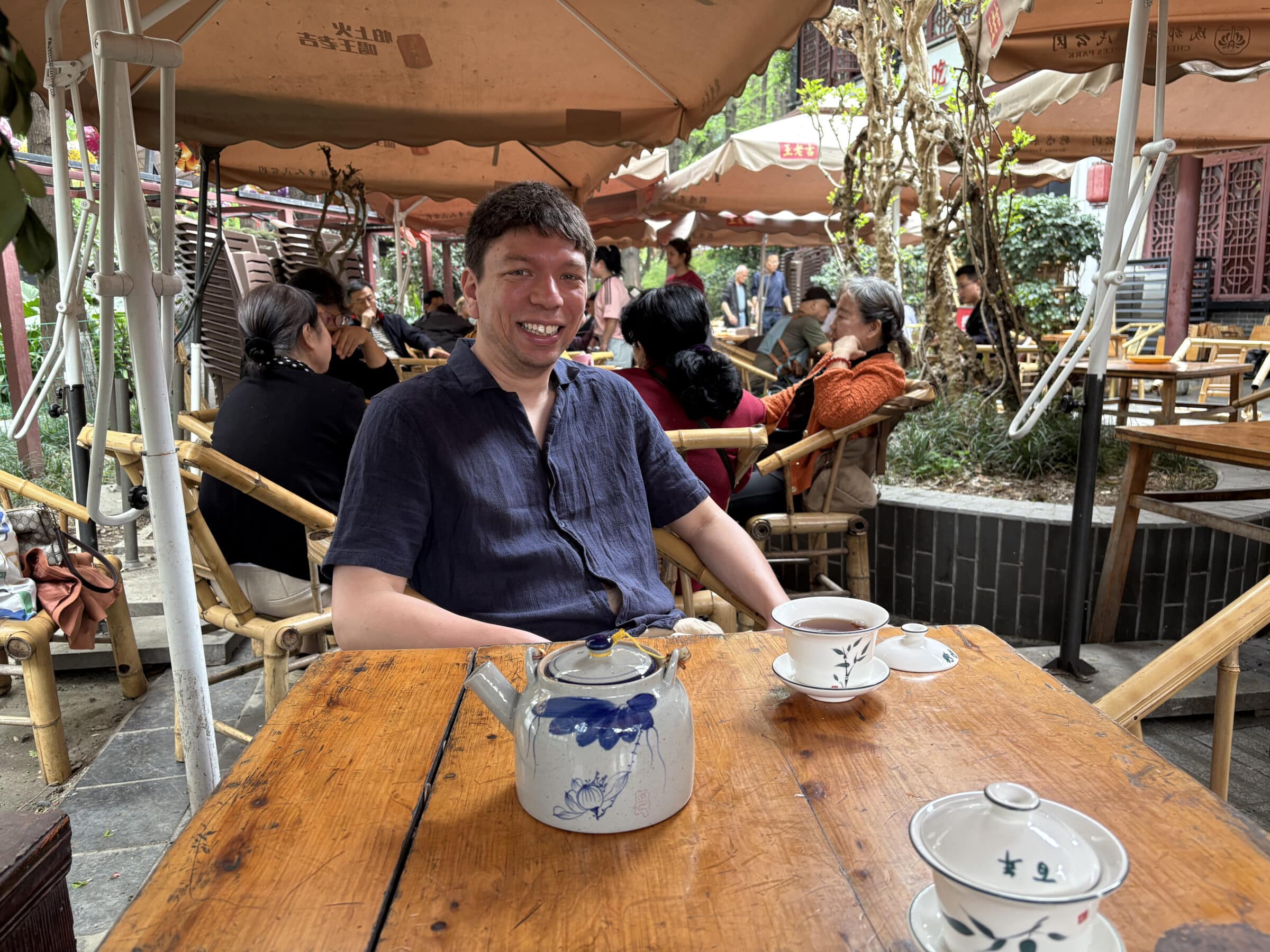
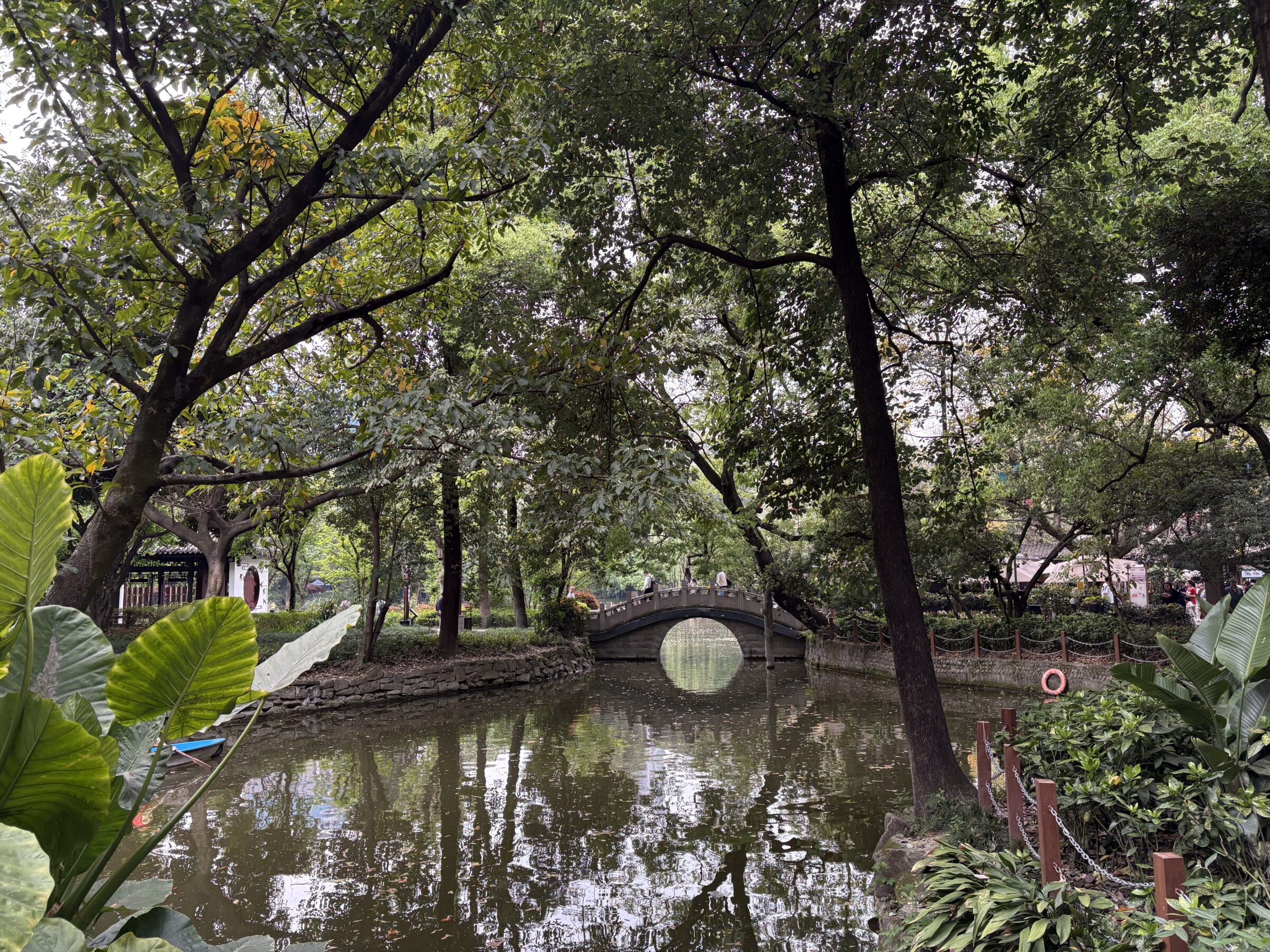
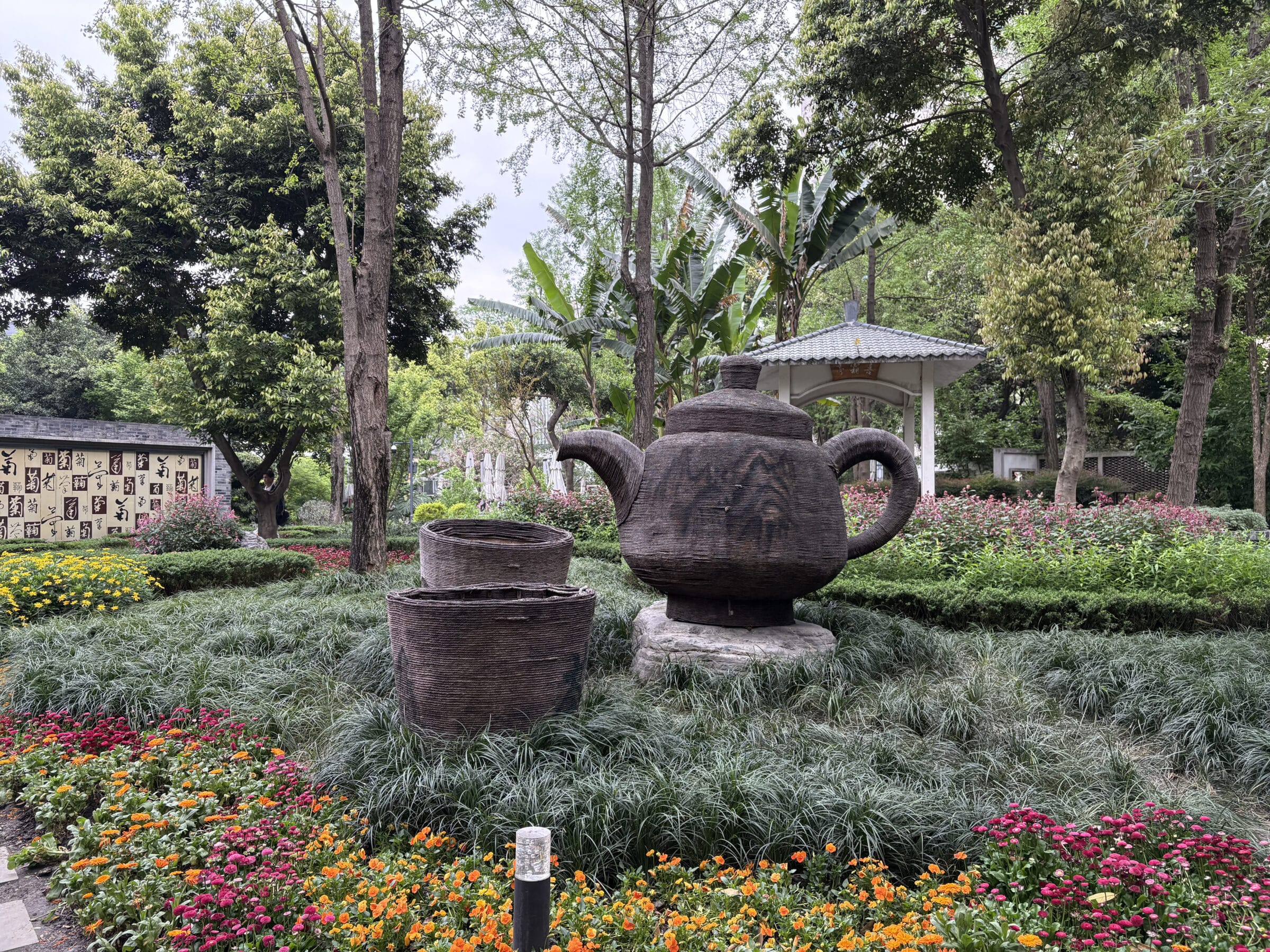
That evening we had our second Lost Plate food tour, this time led by Fiona and travelling between spots via tuk tuk. We were lucky to get a very interesting group of travellers, including a couple of Americans, and I was pleased to discover that actually I can perfectly handle the ‘normal’ level of Sichuan spice for which this region is known for. Overall, though, we preferred the diversity of food in Beijing to Chengdu, although Chengdu absolutely came out the winner for real gelato ice creams.
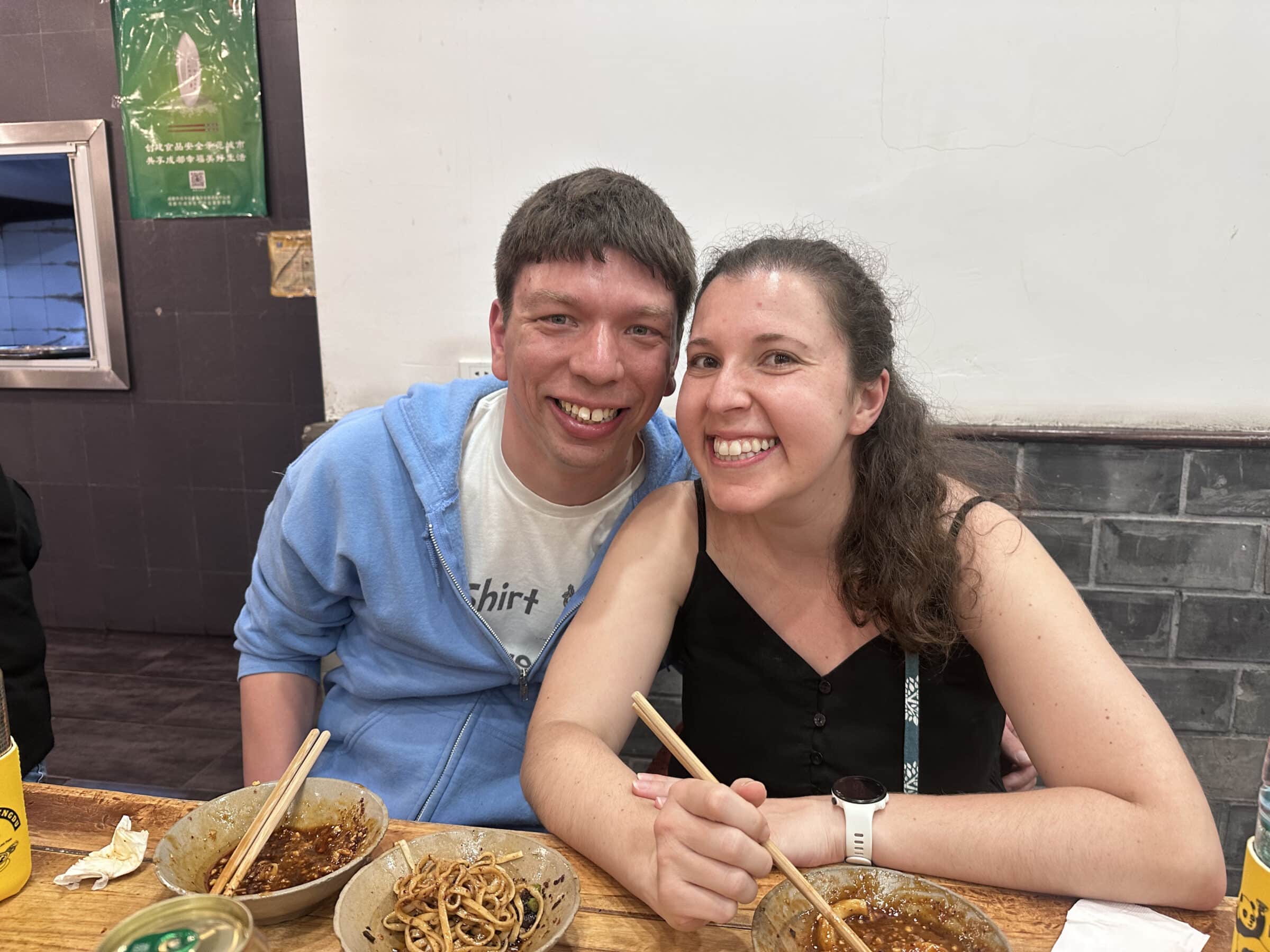
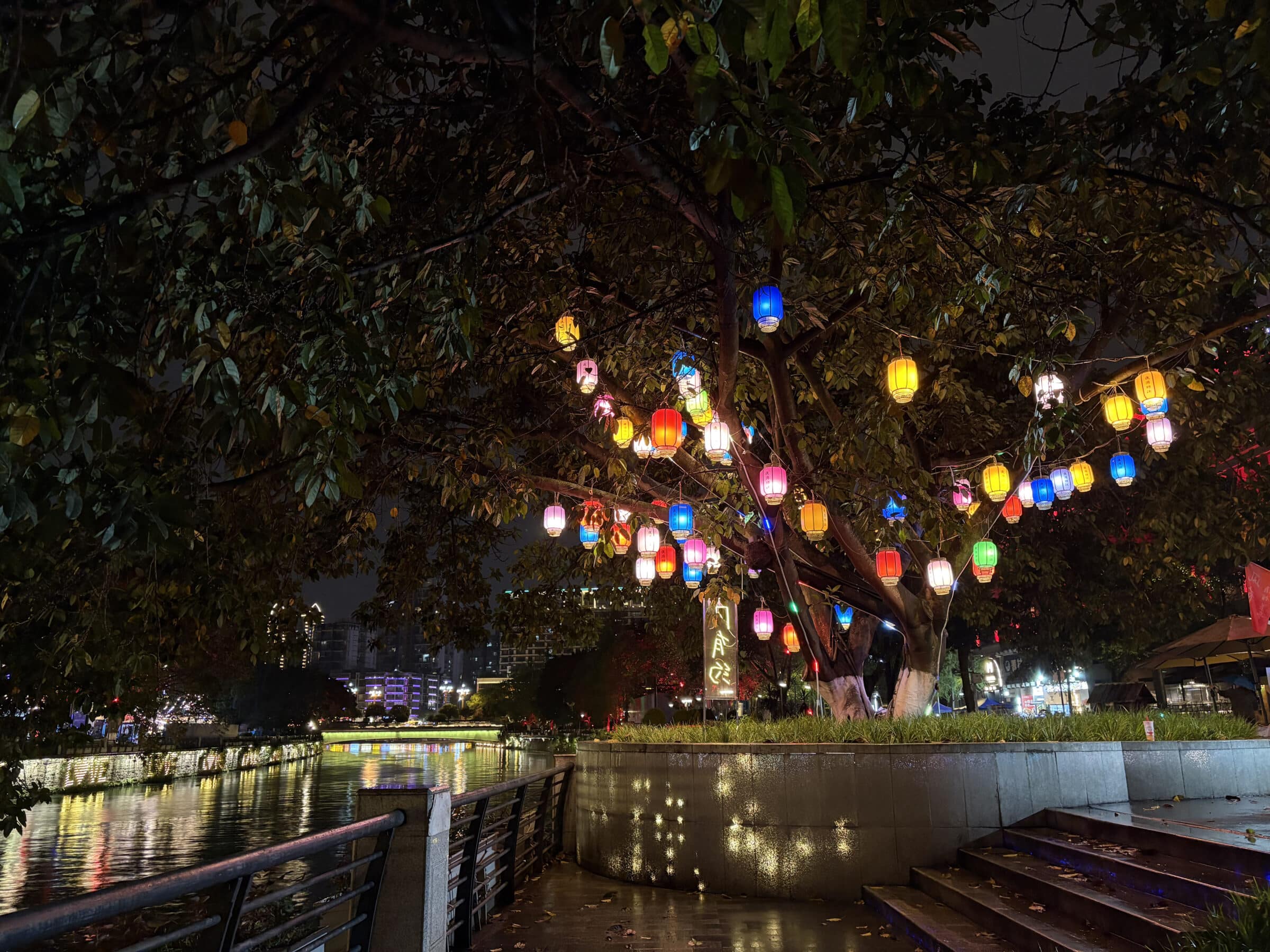
Day 8: Qingcheng Mountain

We had clearly started to imbibe some of the relaxed Chengdu way of life and took our time getting to Mount Qingcheng the next day, which required a subway to a train to a taxi for the hiking-friendly ‘Back Mountain’ area. (A scrolling message on the train requested passengers to “promote traditional values and advocate civilised values”, which I found a little too vague to know if I was complying with.)
So it was already lunchtime when we arrived at the Taian Ancient Village at the base of the mountain, and while eating at one of the many, many, many food spots I kept staring at Google Translate to appreciate the bizarre posters on the wall, which included “No matter how many times my customers abuse me, I will treat them like my first love” and a long list of deeply confusing prohibitions (?) including “wearing a bikini in winter”, “being even more arrogant than Bin Laden” and “driving an Alto and insisting that an Audi is ugly”.
If you’re planning on doing a proper hike you should absolutely leave more time than us, not least because the cablecars stop running. But we enjoyed our scenic walk along the mountain paths until turning back, although we didn’t love the incredibly slow cablecar itself, which took over 20 minutes on the ride up. A small observation, but one which speaks to a wider pattern, was passing a guy employed to pick up litter and empty the bins along this nature trek. This was a common theme in China (e.g. someone polishing surfaces on the metro, or the train attendant who tucked in the dangling straps on all the overhead bags) and I often associate this type of careful labour with a society which is big on people but low on automation. But China’s extremely high on automation! It’s a combination of efficiency with high personal standards, and it’s just nice to be around.
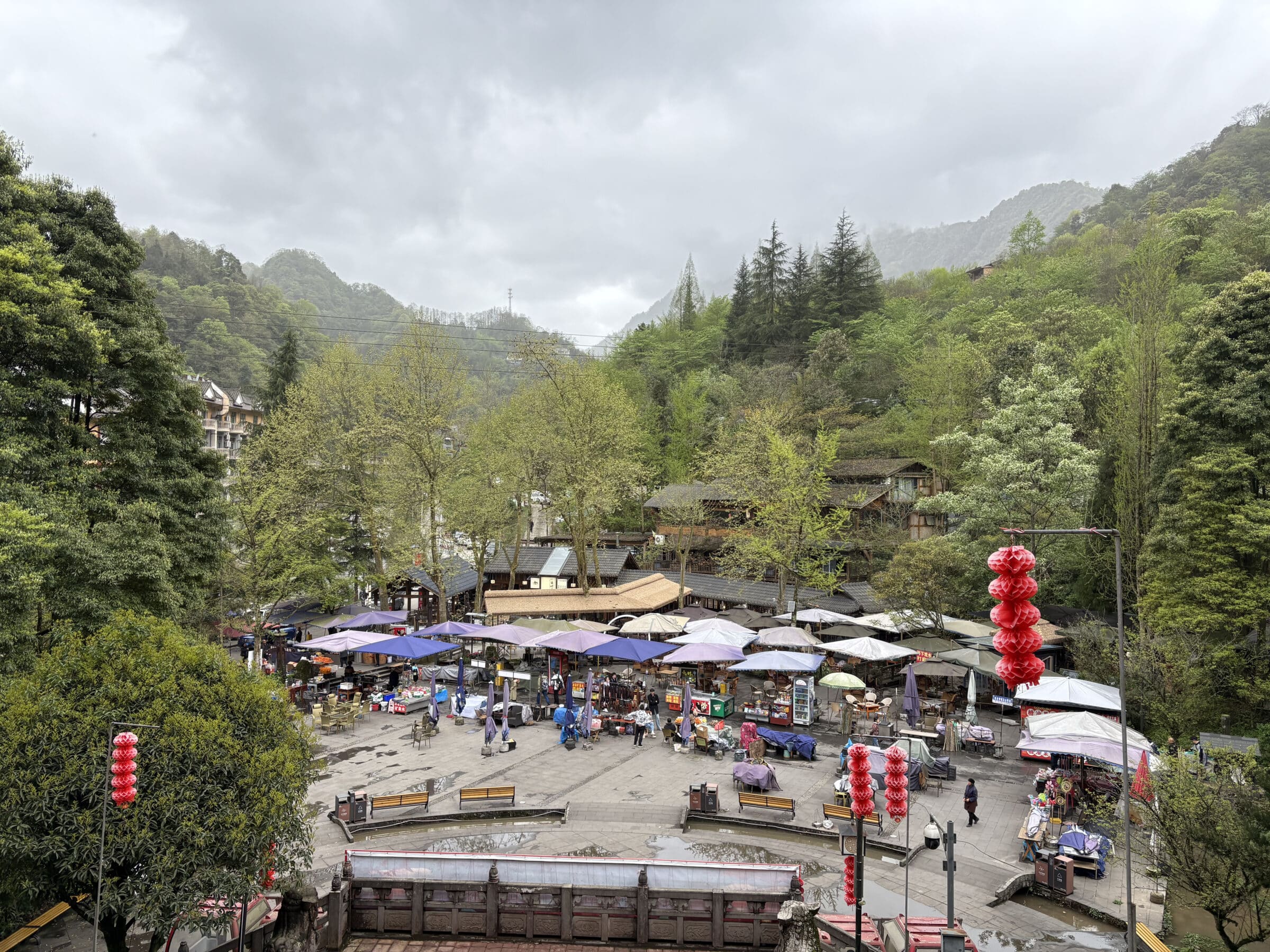
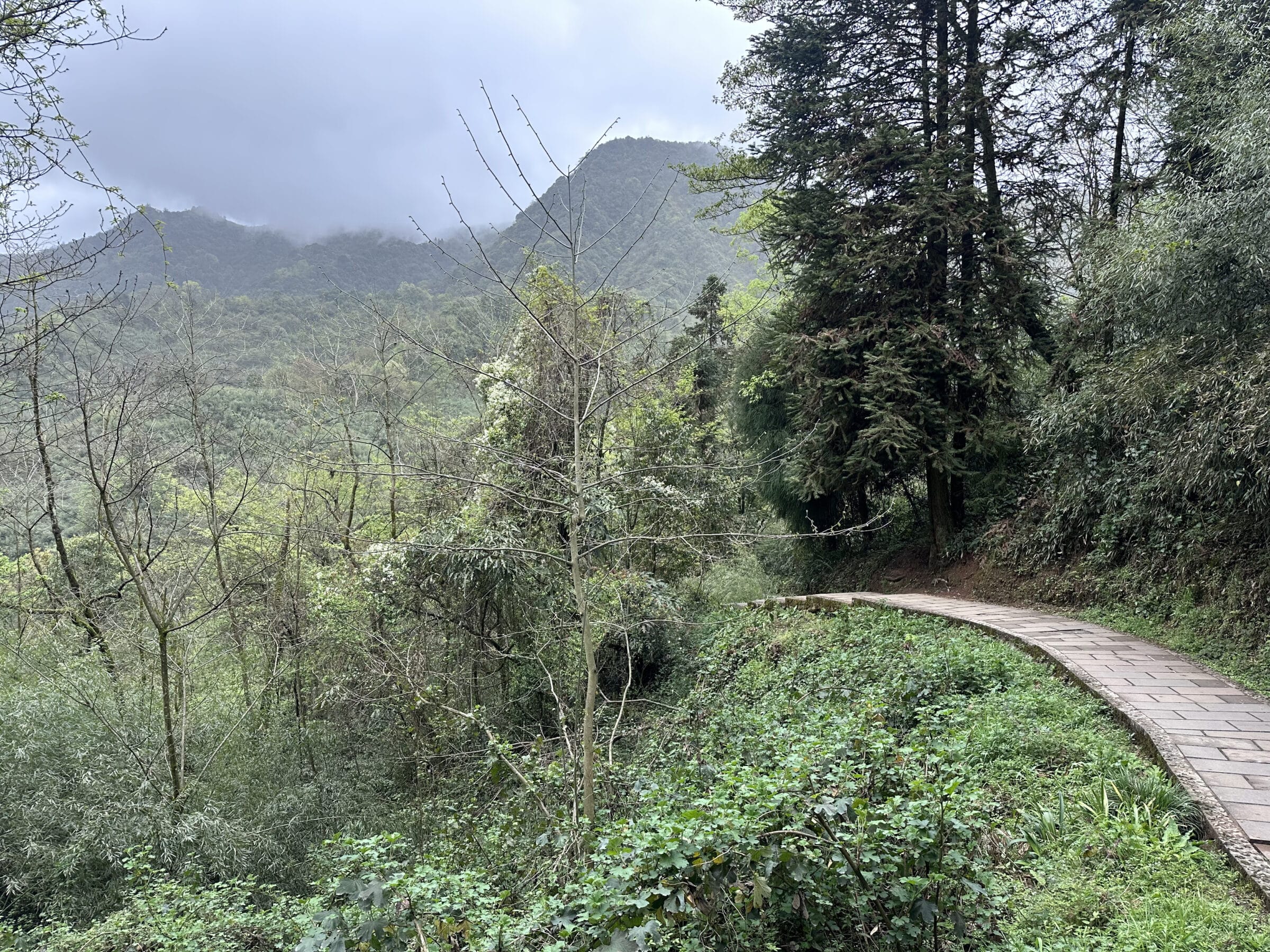
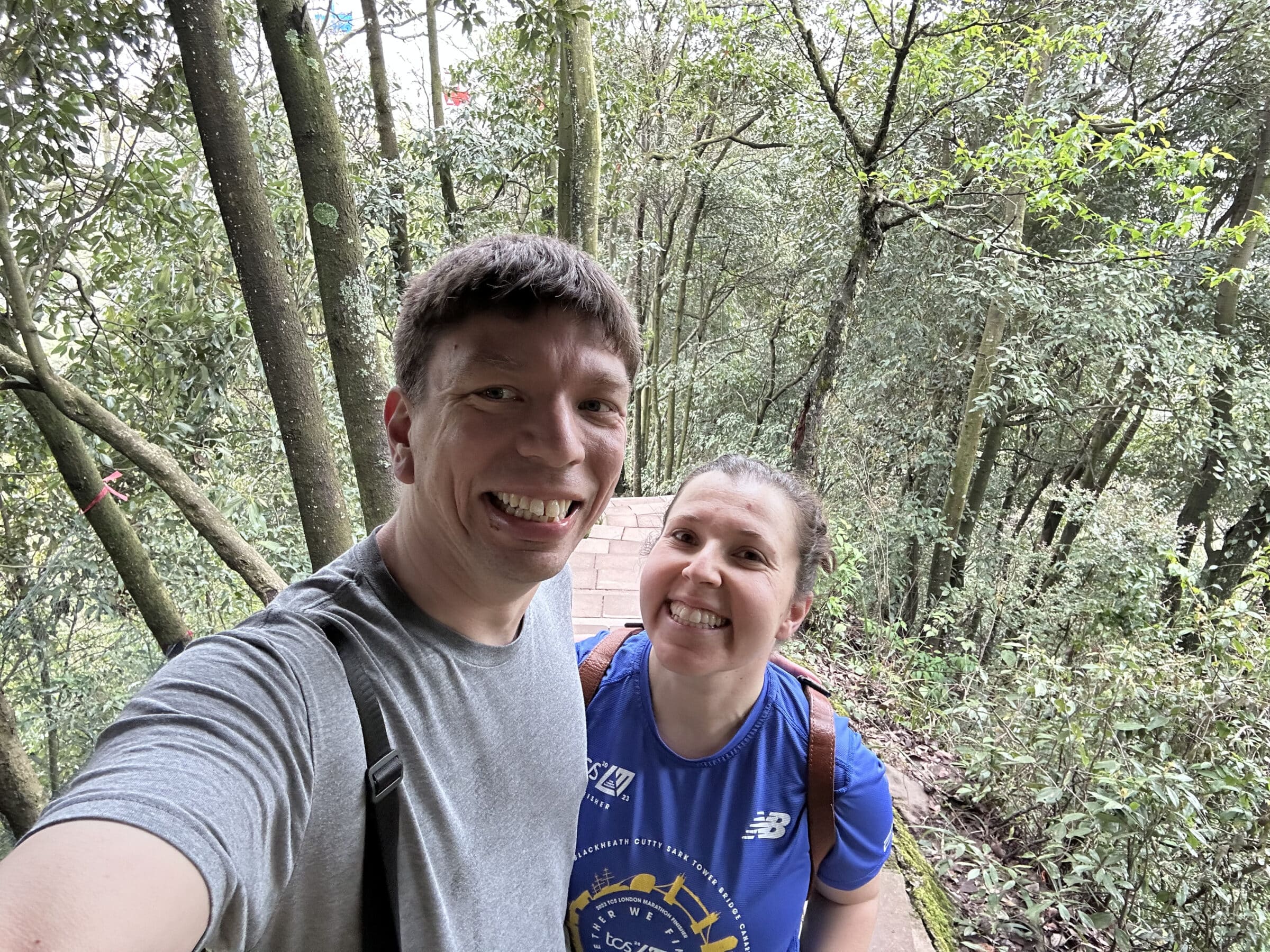
Final cultural encounter for the day: back in town, we ate dinner in another shopping centre where it slowly dawned on me that all of the non-food shops were anime-themed, and there was an absolute explosion of cosplay.
Day 9: Jinli Street & Marriage Market
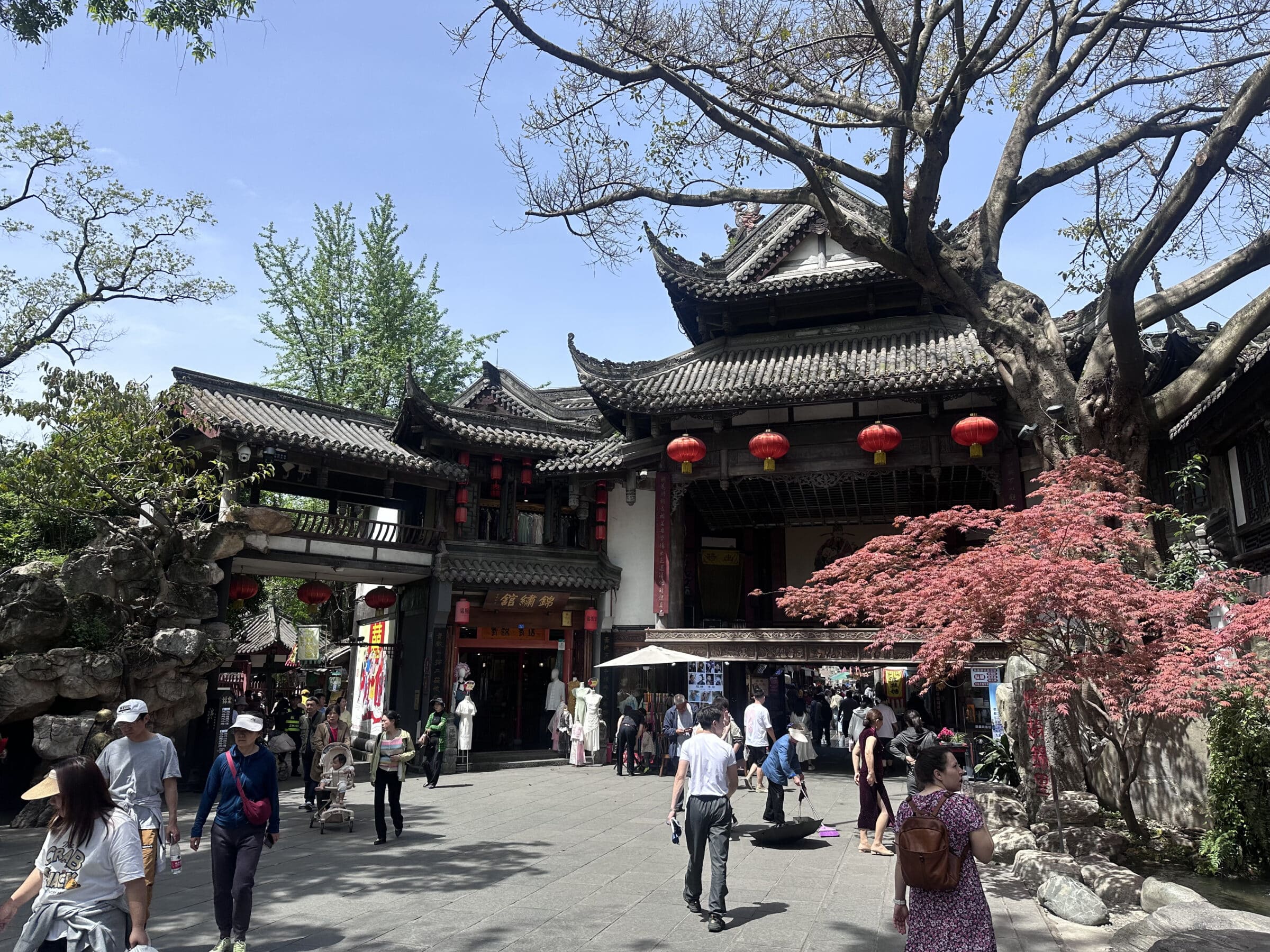
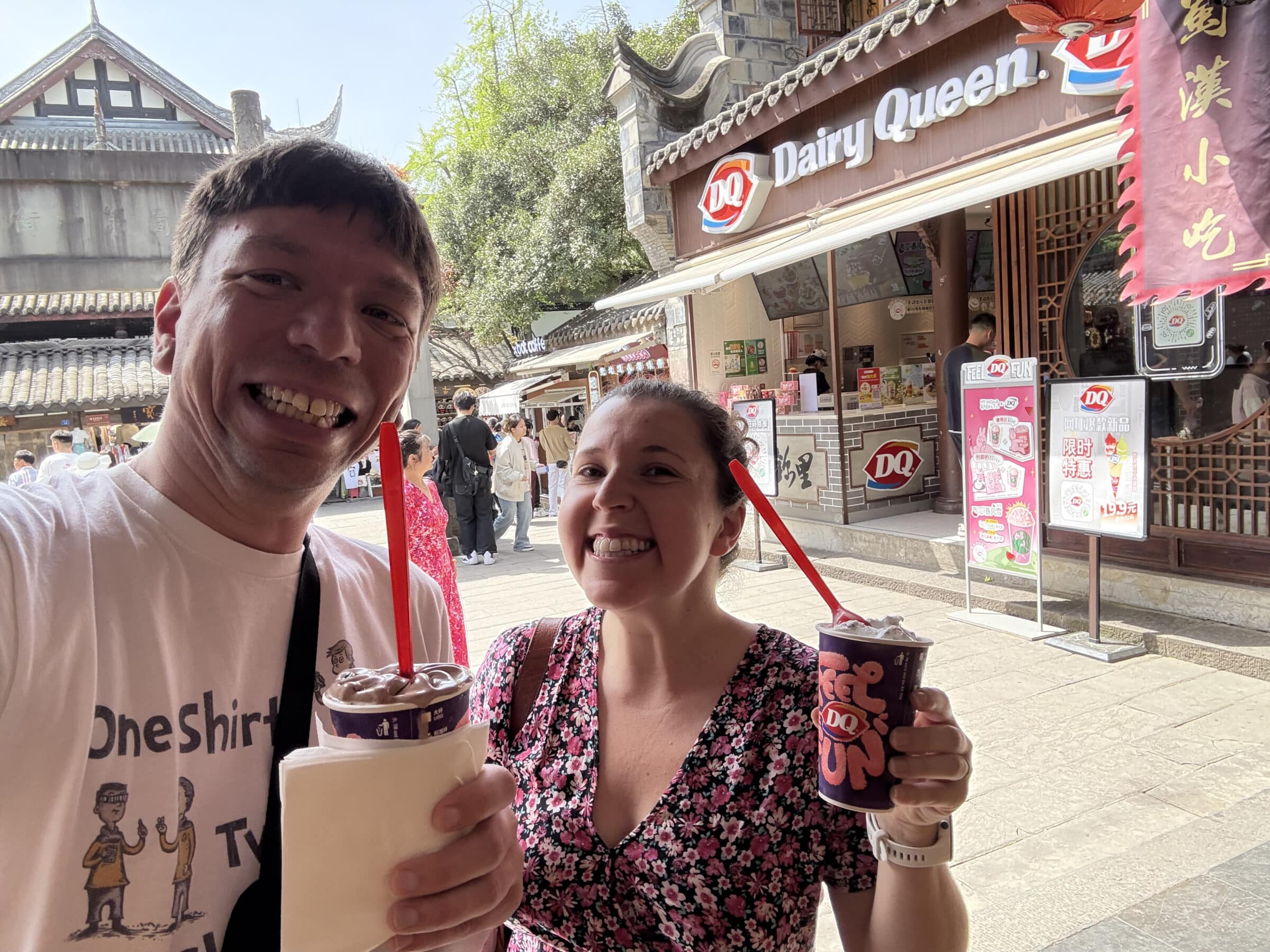
After a lazy morning of reading (I had to finish the Cromwell trilogy somehow) we had lunch at Jinli Street, Chengdu’s other famous market of alleys, before Randi was extremely excited to relive her childhood by enjoying some Dairy Queen Blizzards. Apparently it’s a tradition for the server to turn these upside down before handing them to you, and Randi was also thrilled to confirm that China has retained this tradition, so Dairy Queen wins a lot more points from us for cultural authenticity than Pizza Hut.
Then we headed back to People’s Park because I realised we had missed one of the most fascinating aspects of Chinese society: the dating corner, or ‘marriage market’. These are rows upon rows of sheets (blue for boys, pink for girls) with people looking for partners, albeit apparently it’s often more likely that it’s their parents who have lost patience and posted on their behalf. The form is standardised (name, date of birth, height, unmarried/divorced/widowed, a personal section and the “mate selection criteria”) and only very rarely includes photos.
You could spend hours and hours here, just to get an insight into what ordinary people value and need. Men often want “emotionally simple” women, while being from a “native” family is a criterion for many . (It was later explained to me that being “native” to the city or province often brings privileged access to public services such as education or housing.) Insurance, healthcare, owning a car or house feature prominently, as you might expect. Many specify “no bad habits” in a partner, which seems very ambitious. One ambitious-sounded woman specified that she was a member of the Party. All of life is here, basically, and on this sunny Sunday the place was packed.
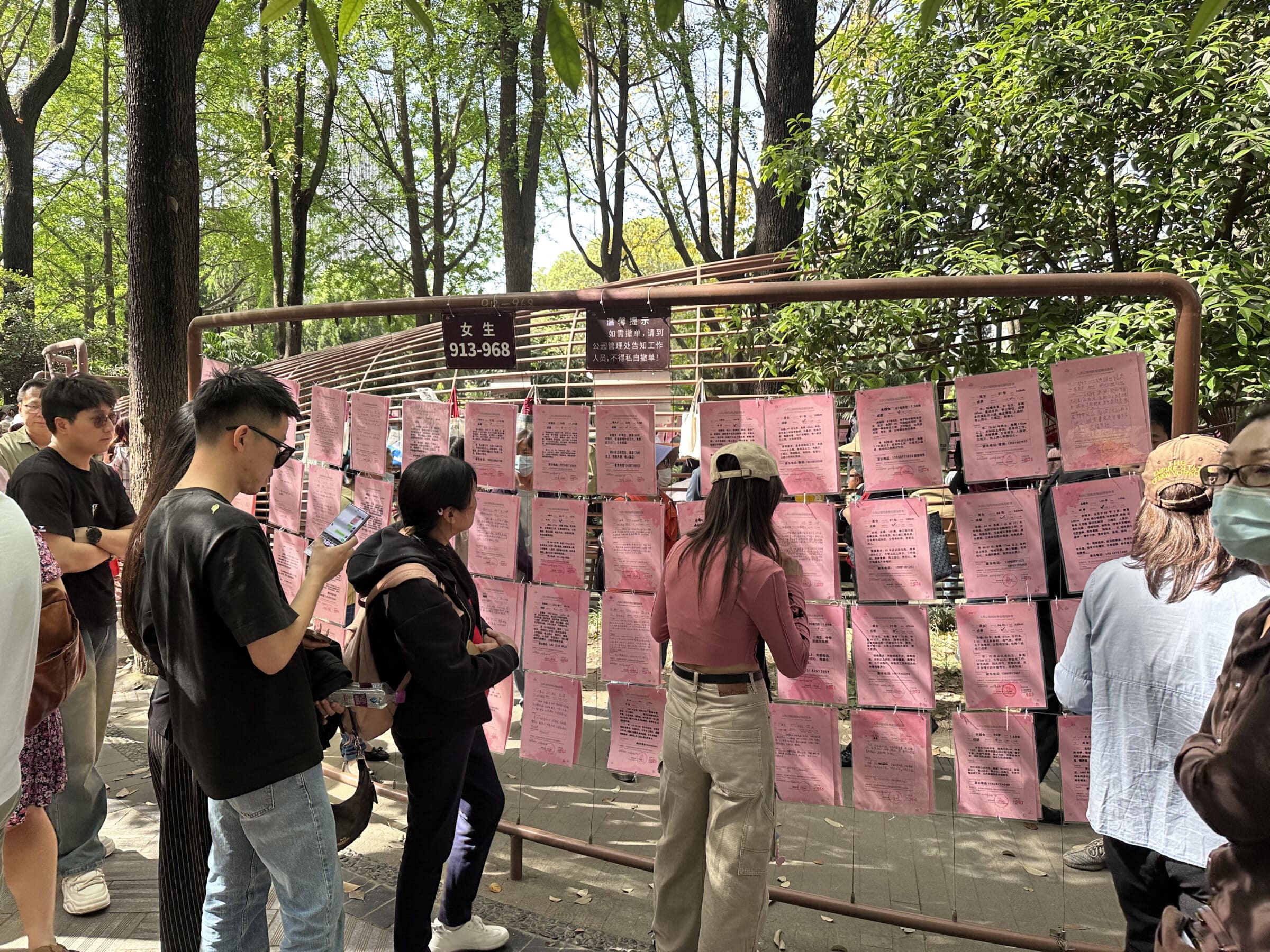
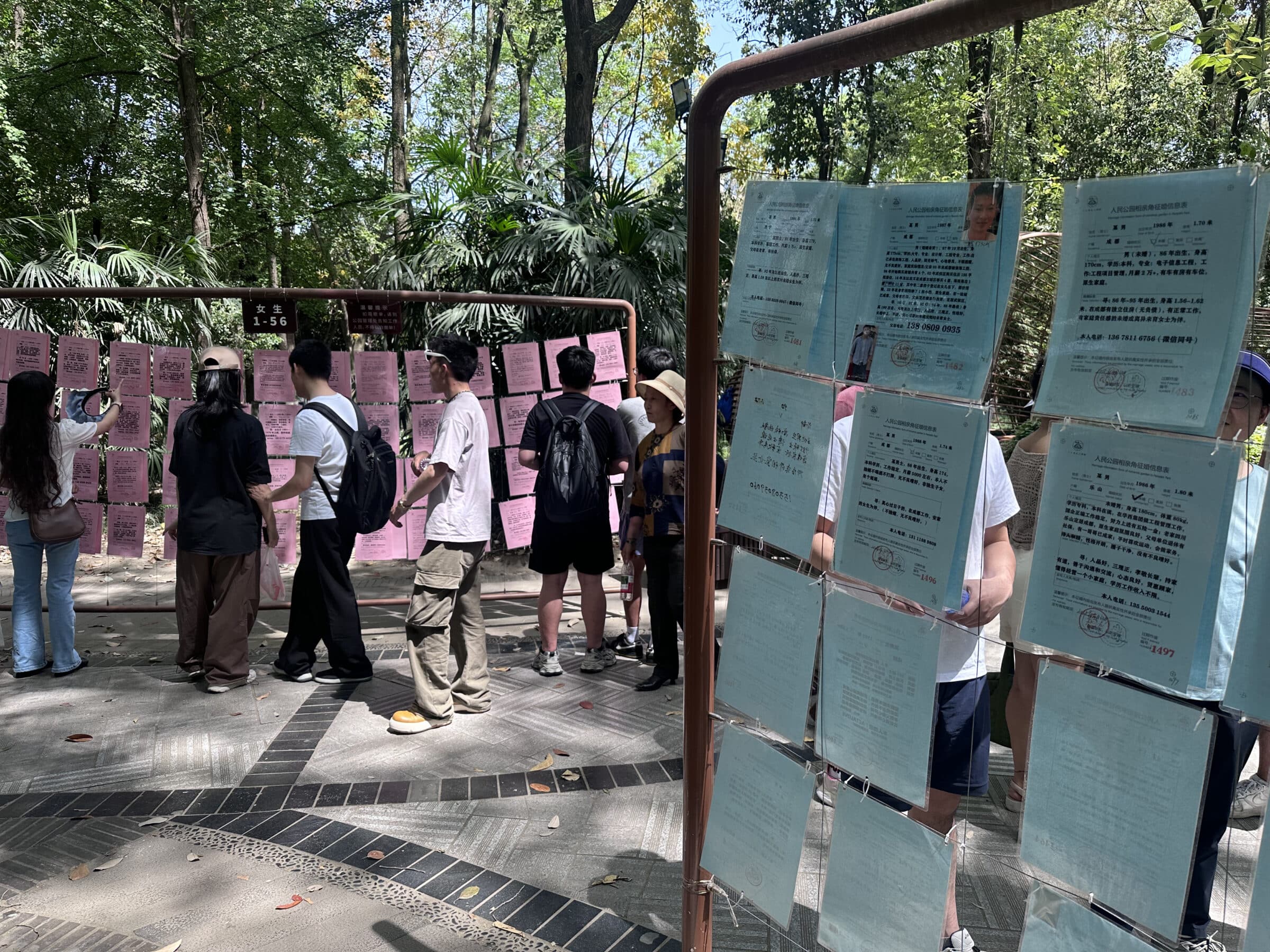
By the time we got home I was collapsing, so after skipping through many Chinese TV channels we watched a bit of Homestead Rescue on the Discovery channel, which is about as perfect an encapsulation of the opposite to the Chinese worldview as you could imagine. Later I roused myself for a late dinner, on the way to which we accidentally turned down a street filled from start to finish with pet shops. Now this is China: never just one of something when there could be 50. The same philosophy was clearly operating at the bakery after dinner where I wasn’t allowed to buy just one honey cake – no, it had to be six. (Total cost was still under a pound, and we ate them all.)
Day 10: Cycling the Tianfu Greenway
One of Randi’s discoveries when researching Chengdu was the Tianfu Greenway: a 100km long circular cycle route which makes a loop around the city and is entirely segregated from cars. During our time in Chengdu we rode on two small sections, and on our first outing we started in the east to finish in a surprisingly rural southeast corner. (It was a bit of a transport desert for the Metro, actually, but fear not: Line 13 is already under construction!)
Renting bikes is easy enough, assuming you have Alipay already linked to your mobile number. We chose the blue-coloured option, as apparently they have the smoothest process for foreign tourists. As ever, everything just kinda worked and was very inexpensive. And as ever, there were plentiful public toilets (plus water vending machines) all along the route.
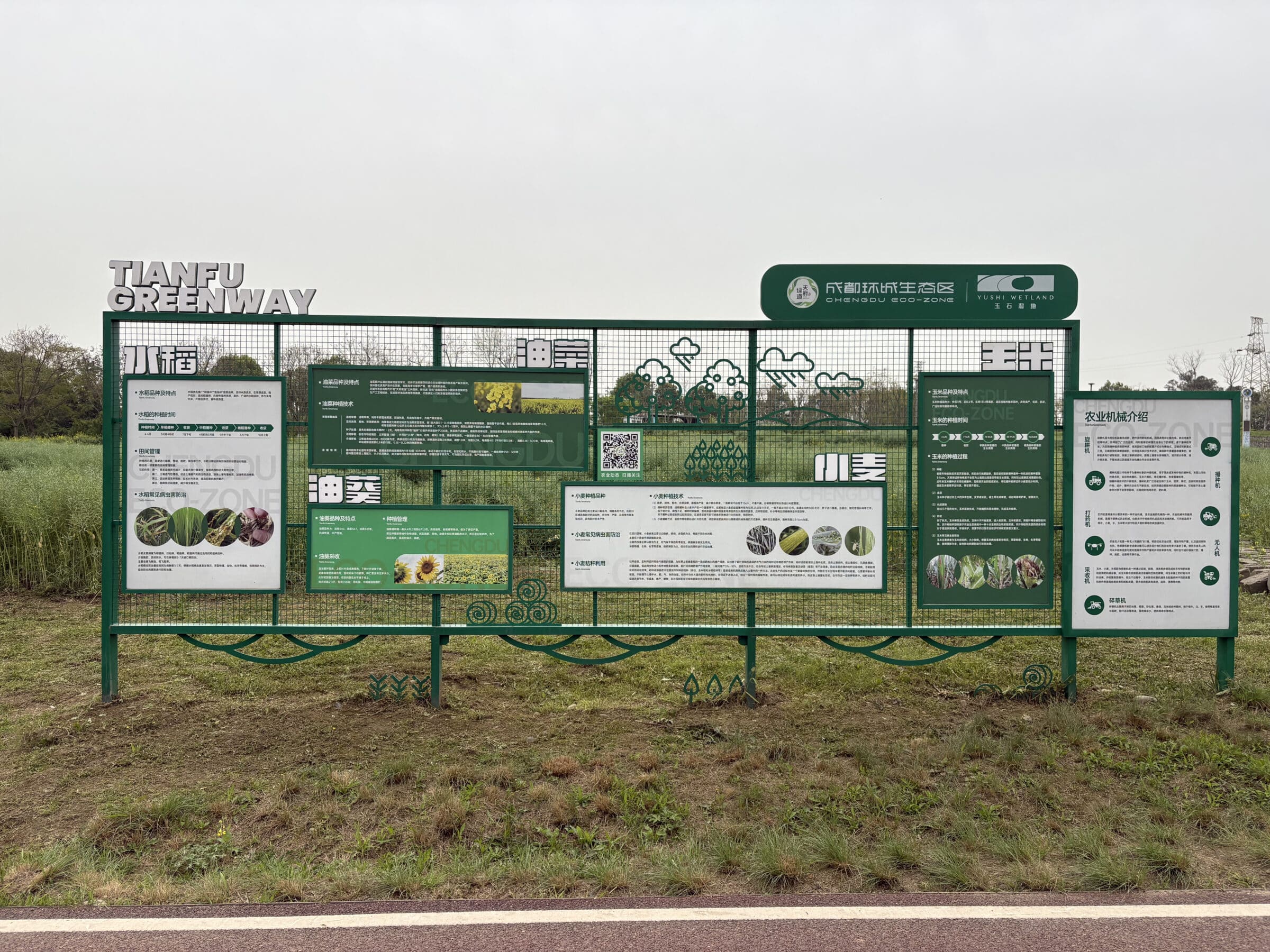
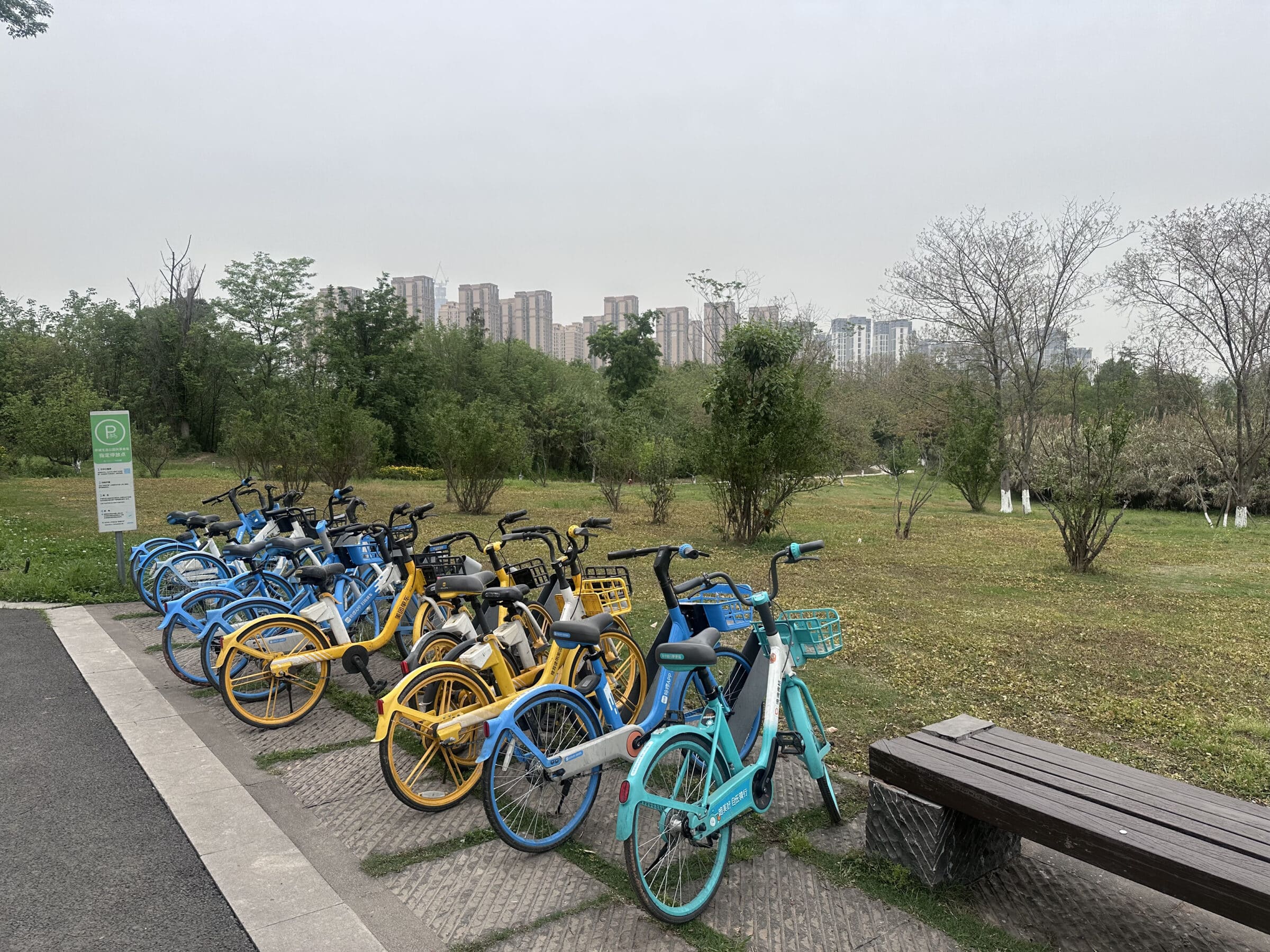
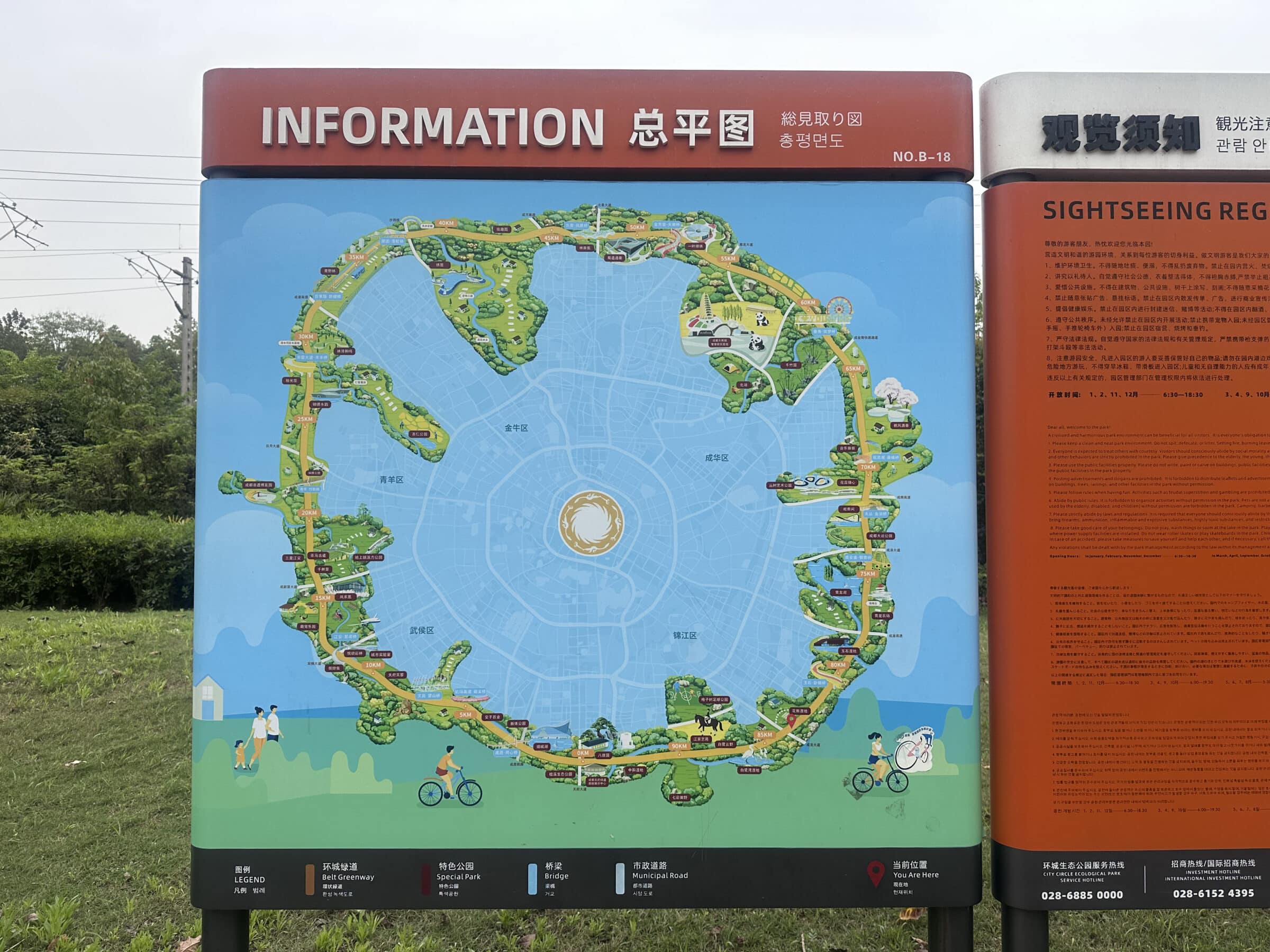
Since we finished in the middle of nowhere, our route home was a bit haphazard – we jumped on a bus, but I didn’t want to swelter the whole time, so we jumped back off nearish a metro – which had the benefit of taking us through a truly ‘suburban’ feeling area. ‘Suburban’ in the sense that it’s clearly a ‘live here, raise a family commute into the centre if needed’ kinda place. Except the housing is still on a massive scale: a vast landscape of apartment buildings, built to a height which would induce heart attacks if you tried anything like this back at home.
Talking of raising a family: one of the bizarre things we walked past was an information display to promote the new ‘Family Education Promotion Law’ from 2022. The law itself, which I looked up later, is written in such broad-sweeping language as to be utterly alien to me as law. One subsection obliges parents to be:
Teaching minors to love the Party, nation, people, and socialism; setting up a conception of preserving national unity, solidifying awareness of the community of Chinese people, and cultivating sentiment for the homeland.
Also mandatory are to raise children to “admire virtue and be inclined to goodness”, “to be diligent and thrifty”, to “cultivate their positive social mores” and on and on. The information boards promote this law with a series of hypothetical (I assume!) case studies, including domestic violence, for which husband Hu may be reported to organisations in order to be “criticised and educated” with divorce following as an option later. On a lighter note, 8 year old Xiao Ming may dream of visiting the dance hall with his older cousins to dance, but “the purpose of prohibiting minors from entering entertainment venues is to protect their physical and mental health” and breaching these terms is a serious offence.
The final board outlines the legal obligations of adult children towards their parents, which in China are considerable. Courts are empowered to order children to pay maintenance or make mandatory visits to their ageing parents, which is a mind-bending exercise of state authority.
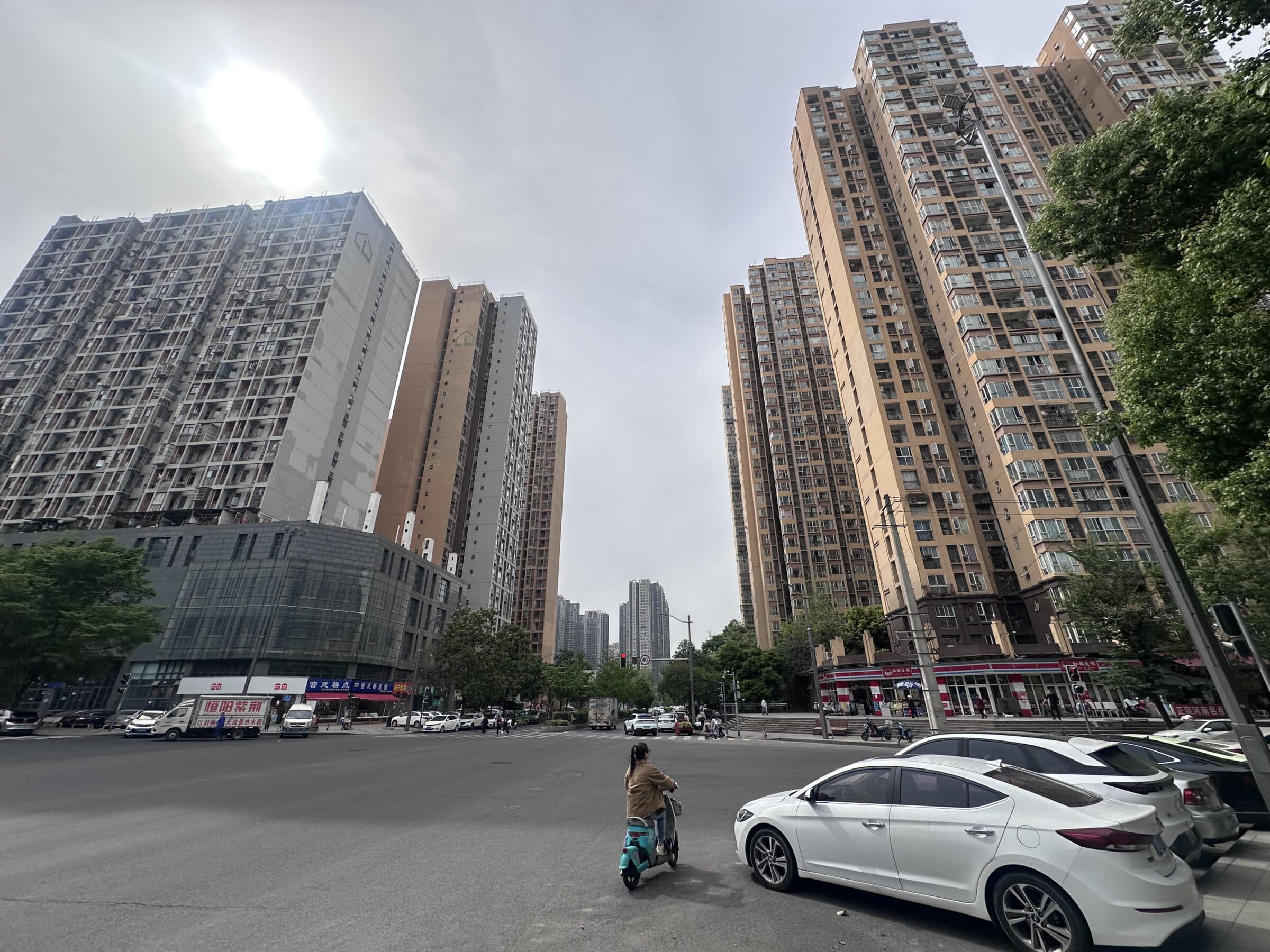
That evening, I cracked. Pizza Hut in Beijing had been a disappointment, but I wanted pizza, so we dined at Dominio’s. (Fun fact: everybody gets a pair of disposable plastic gloves to eat their pizzas with, and everybody uses them.) Then Randi successfully found somewhere selling regular playing cards (after a lot of failed attempts in anime-themed stores) and we played a few games of 7 Card Rummy and Speed from the fancy bar at the top of our fancy hotel.
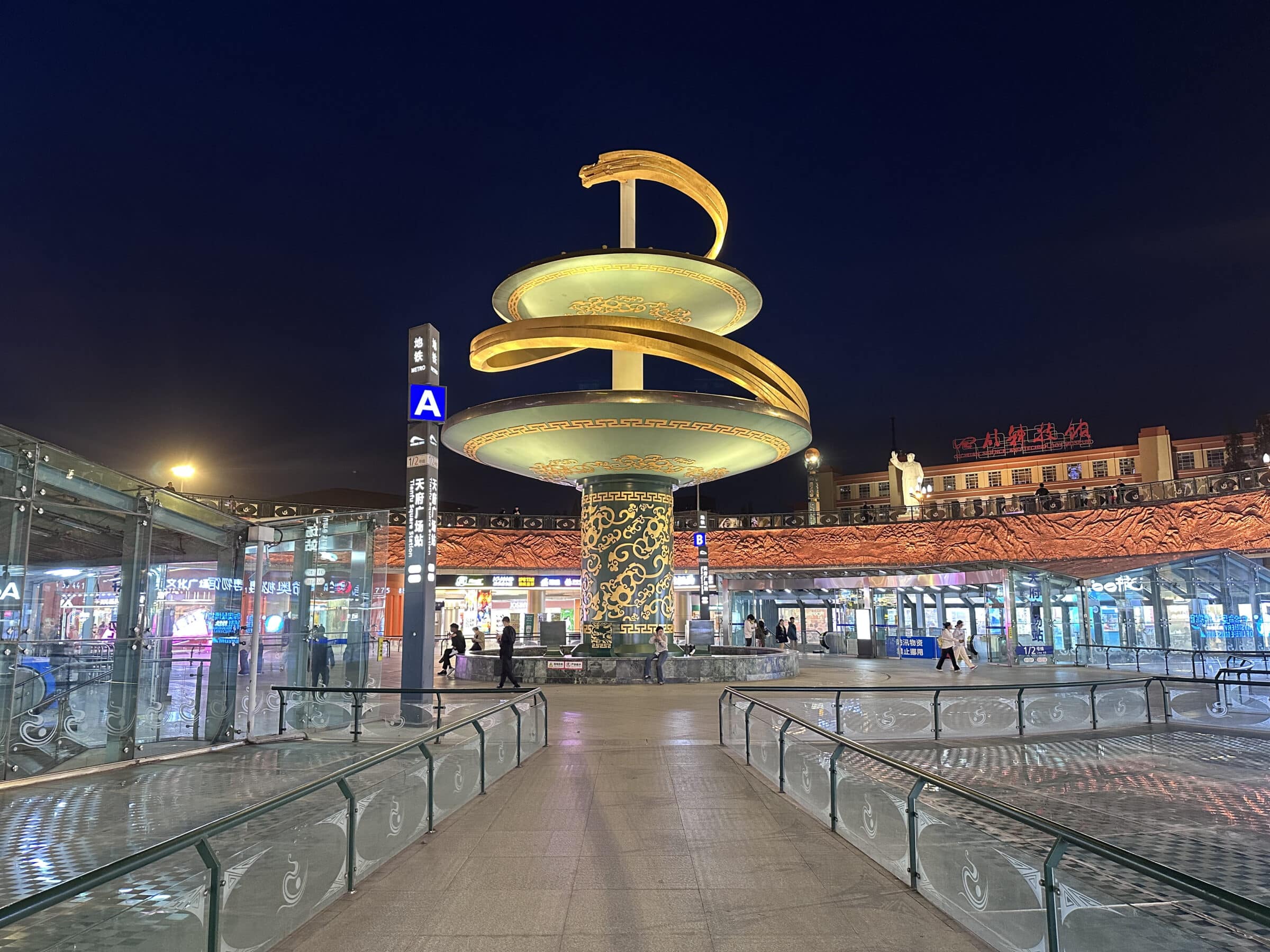
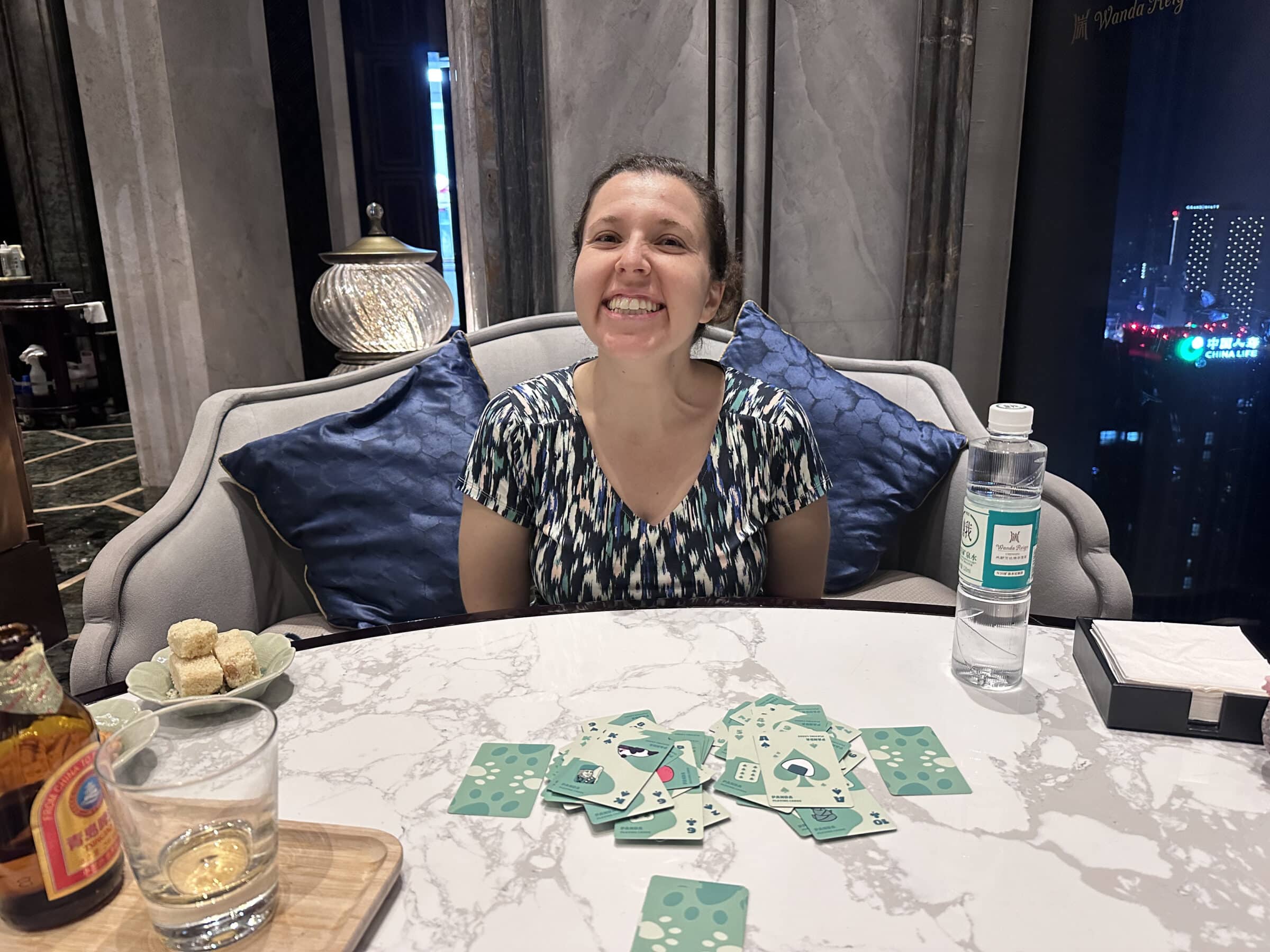
Day 11: Pandas!
Pandas are everywhere in China, but in particular pandas are everywhere in Chengdu, which is world-famous for being home to a number of panda conservation sites. We opted for the ‘Chengdu Research Base of Giant Panda Breeding’ which is the easiest to get to (metro plus shuttle bus) and is a giant panda zoo with both indoor and outdoor sections.
It’s all very nicely done, with a natural walking route between the different zones, although it is quite funny how intense the crowds are around the first panda enclosure. Everybody (including us) is desperate to get a picture (top tip: stand behind the school groups!) but if you just walk a little further on you’ll find equally adorable pandas with no crowds.
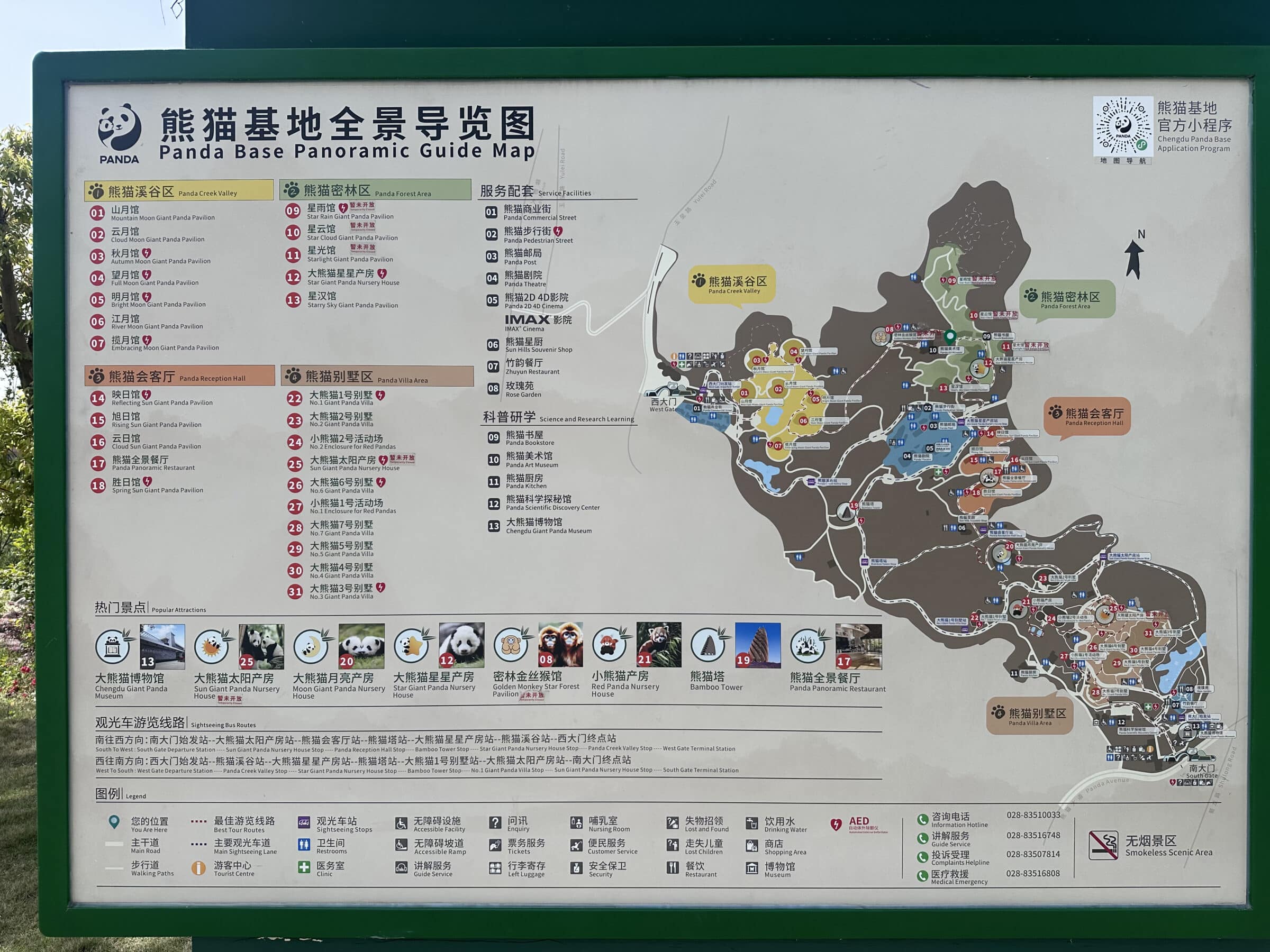
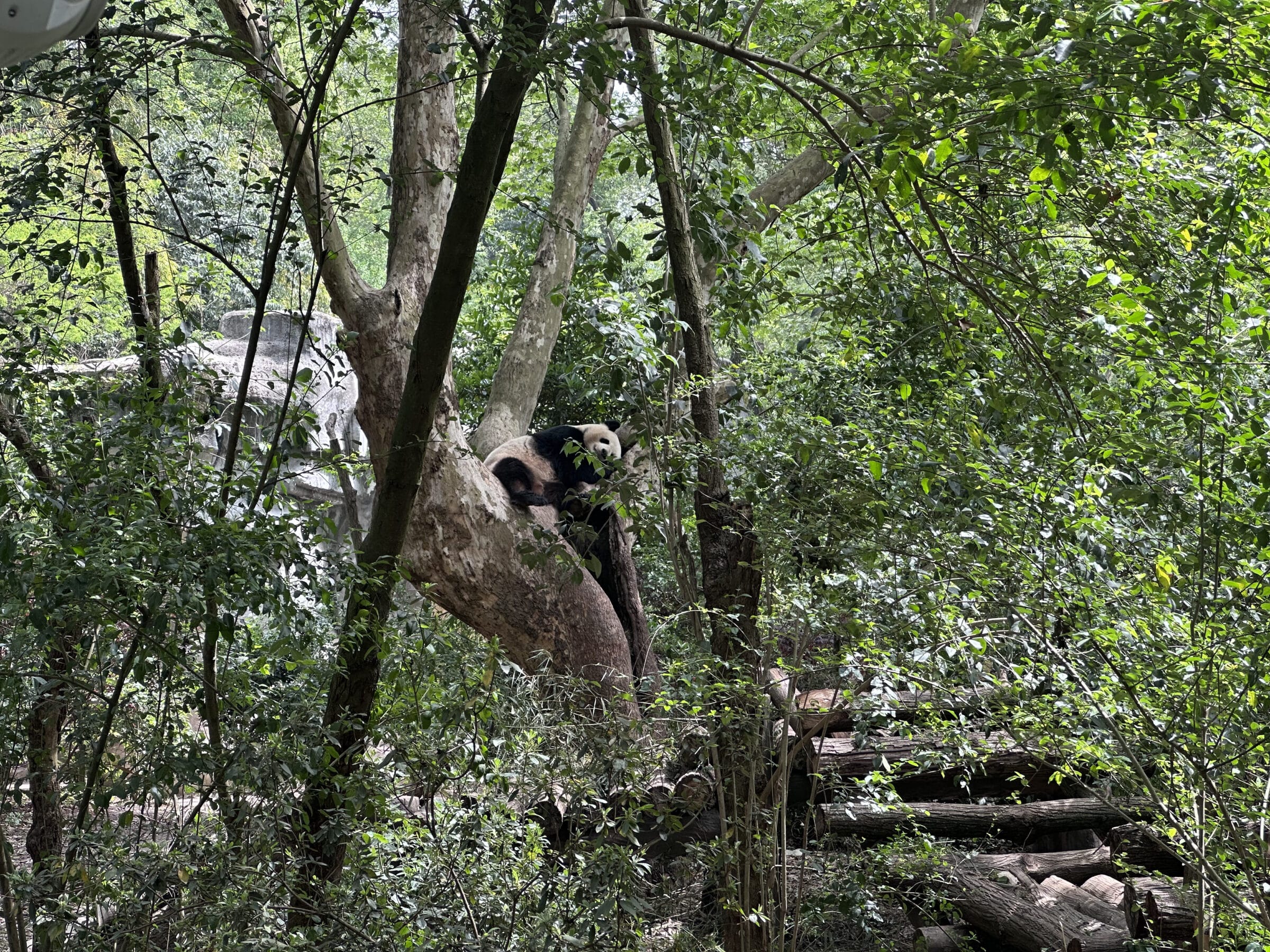
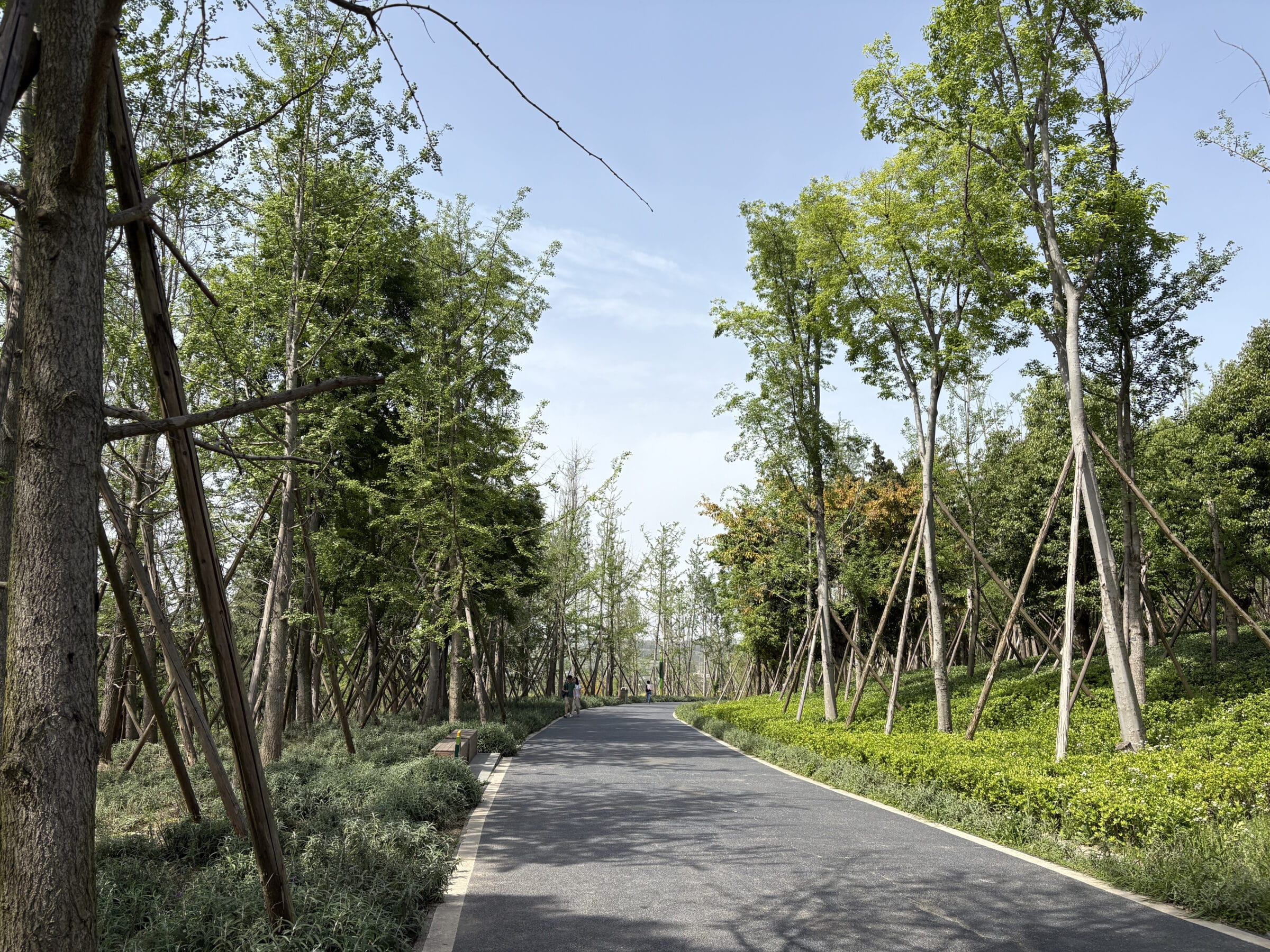
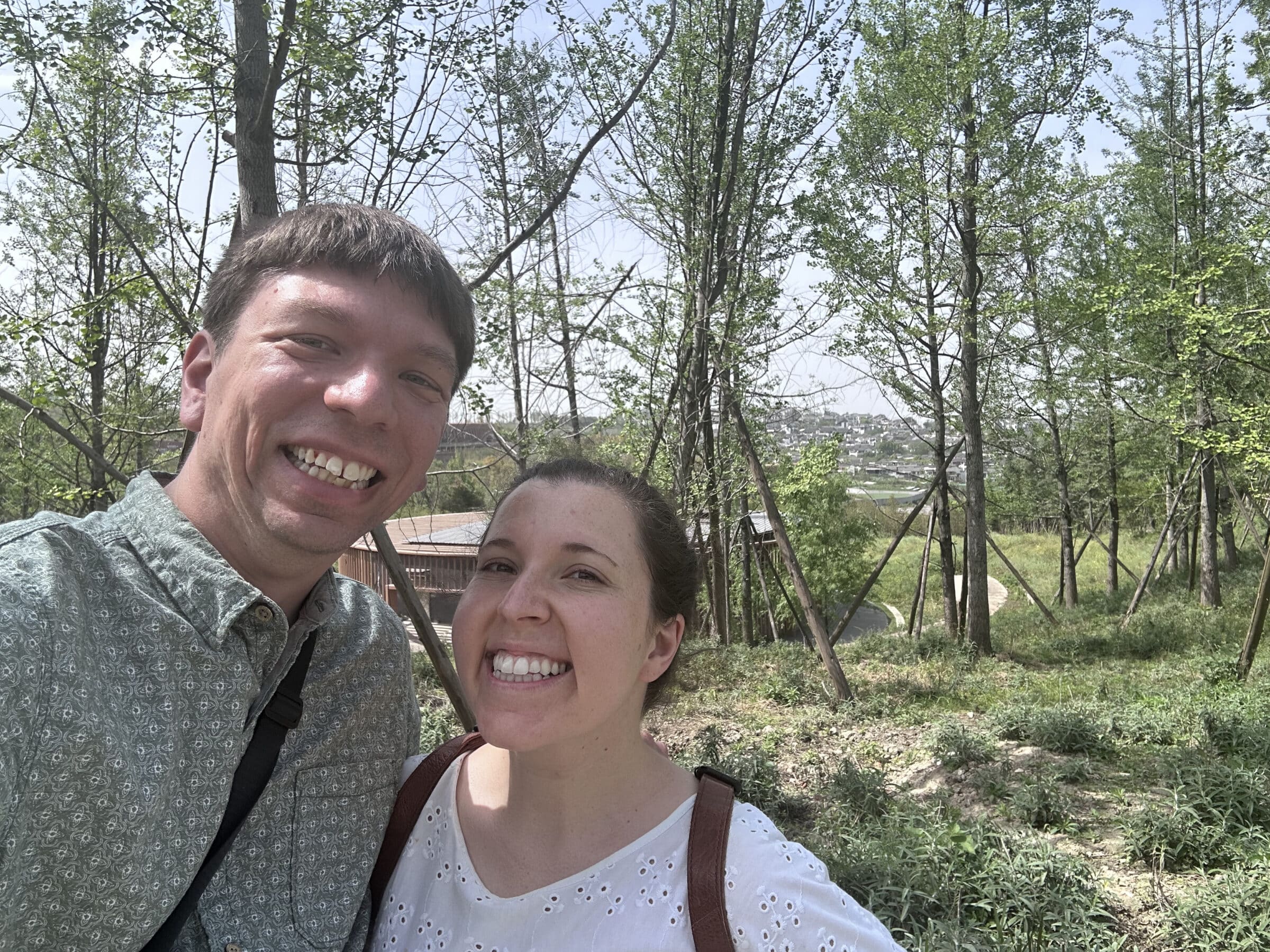
Somewhat oddly, the zoo is also home to a collection of ‘red pandas’, which are a completely separate species (similar to raccoons) and only linked to panda bears by name, as well as being native to China. Sadly, these areas were closed on our visit, so we missed out on the red pandas and will have to go back.
This post is already massively long, so I’m going to cut it before concluding with the third and final part of our trip!
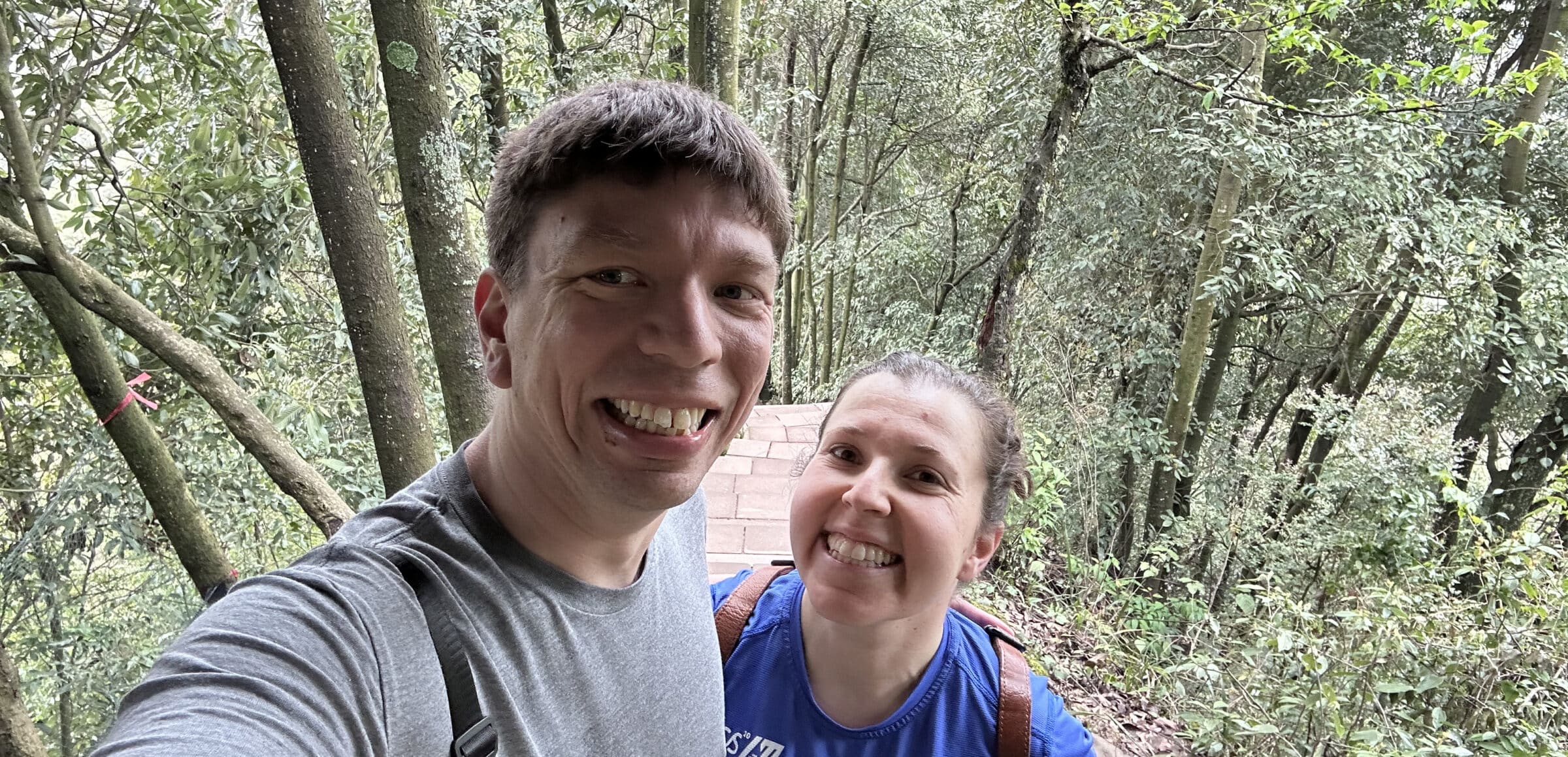
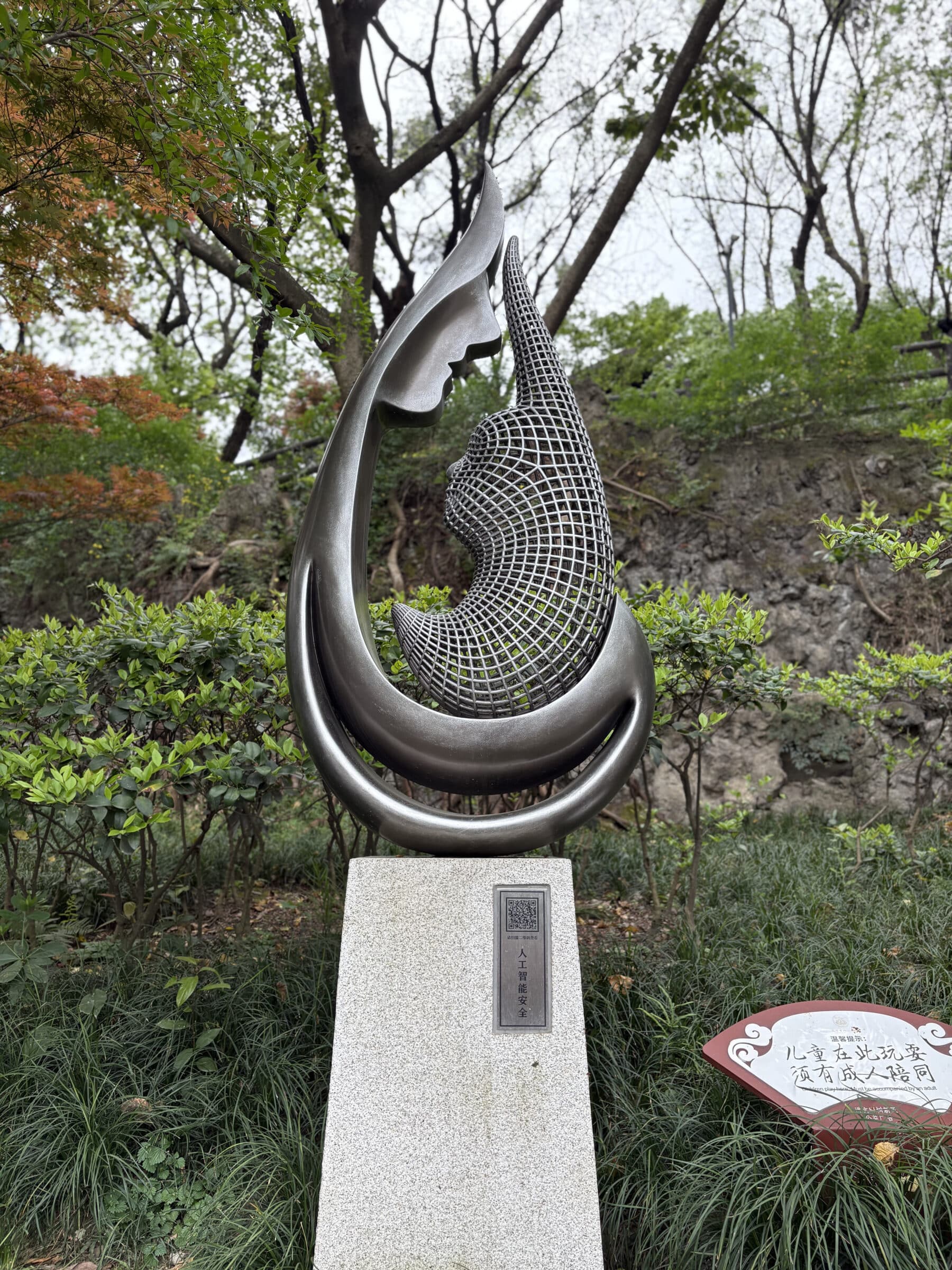
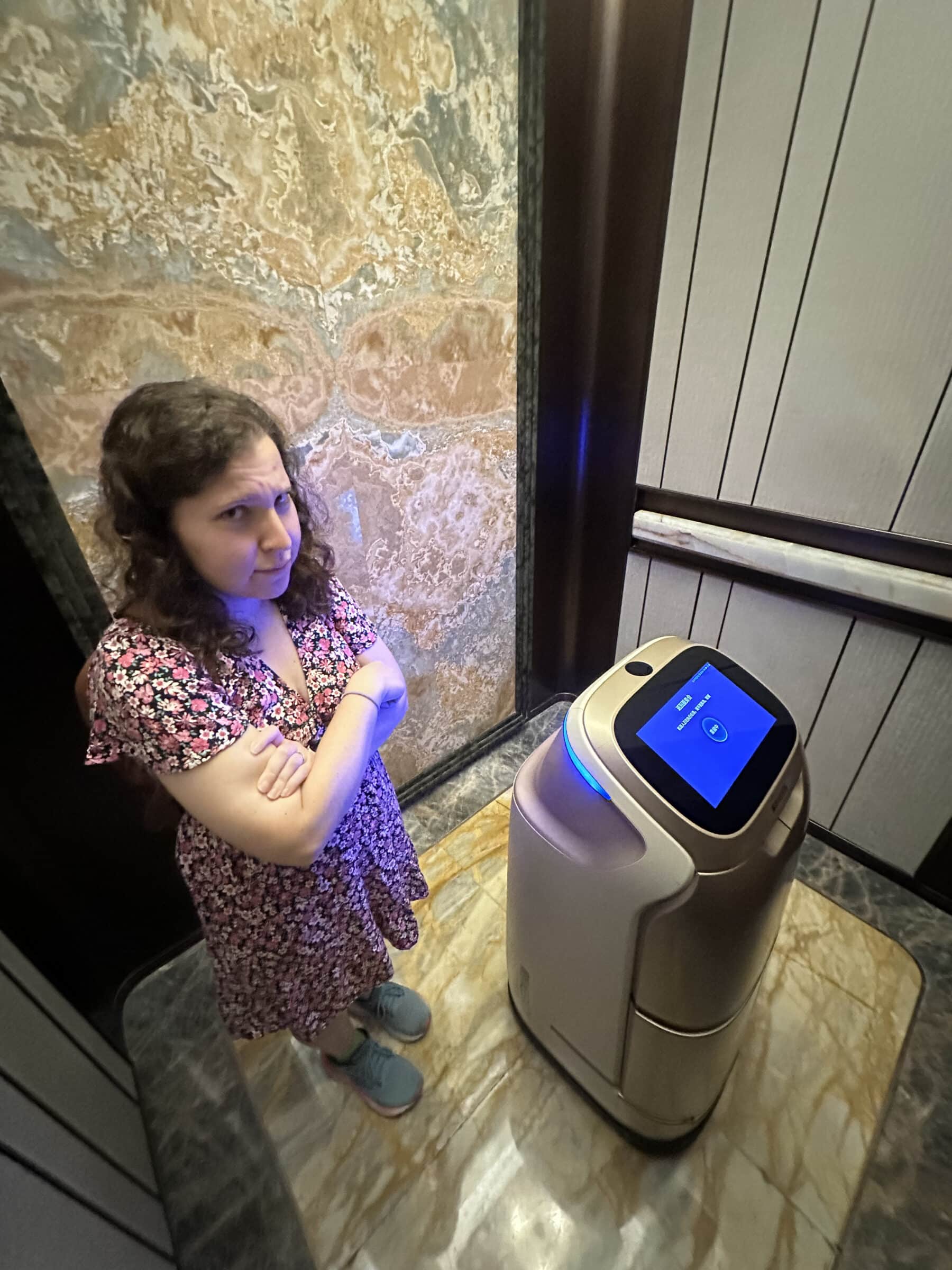
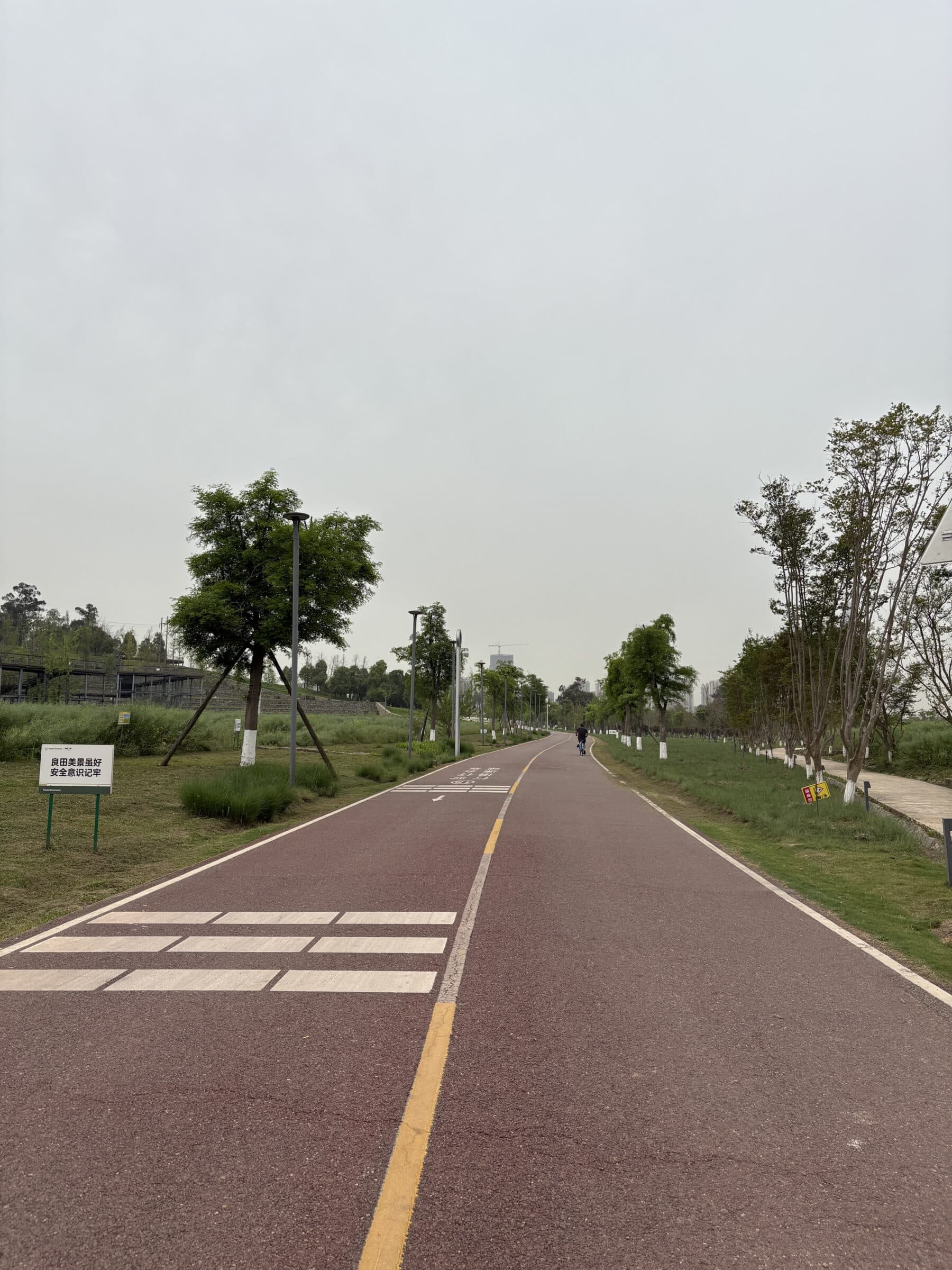
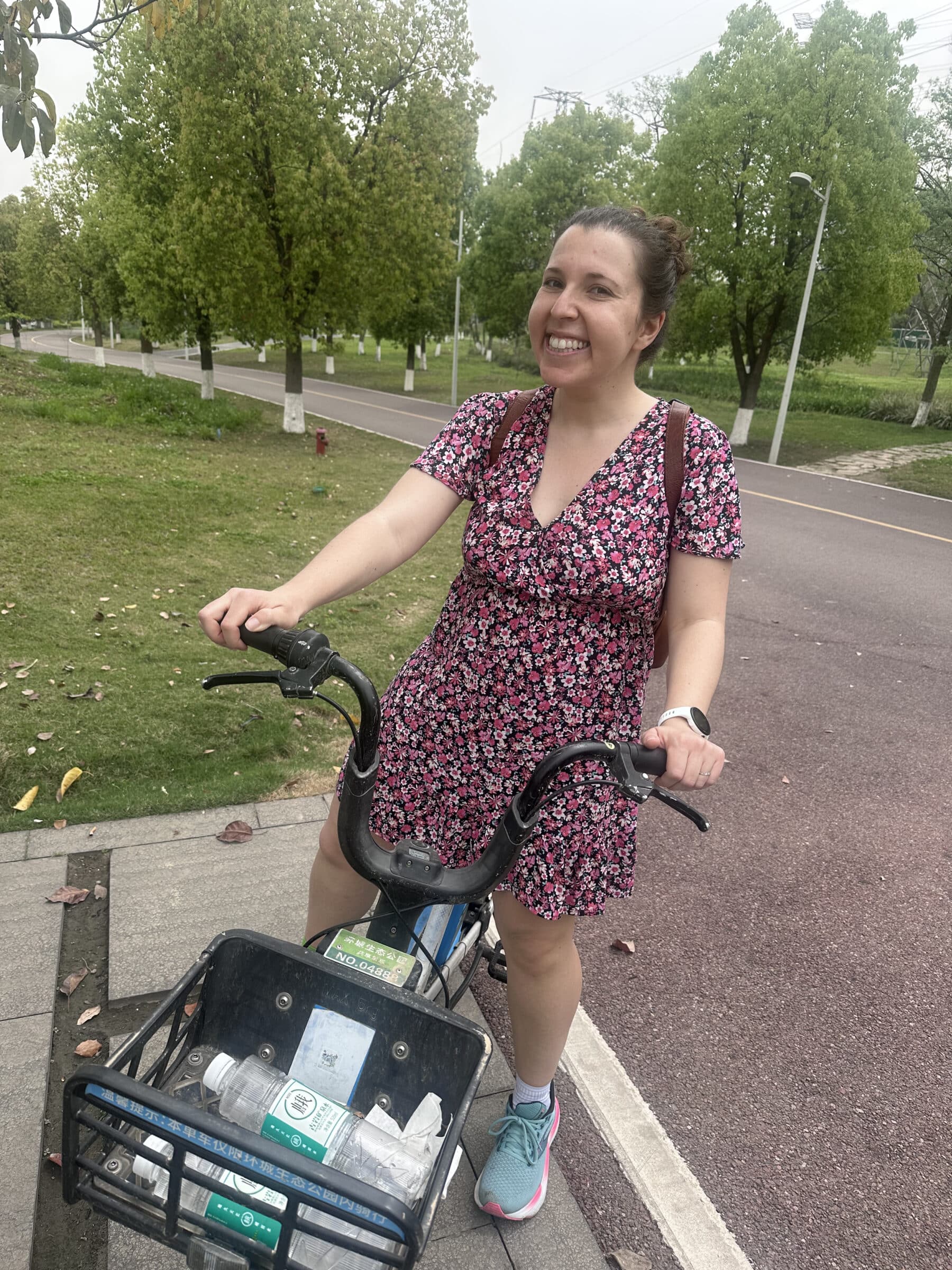
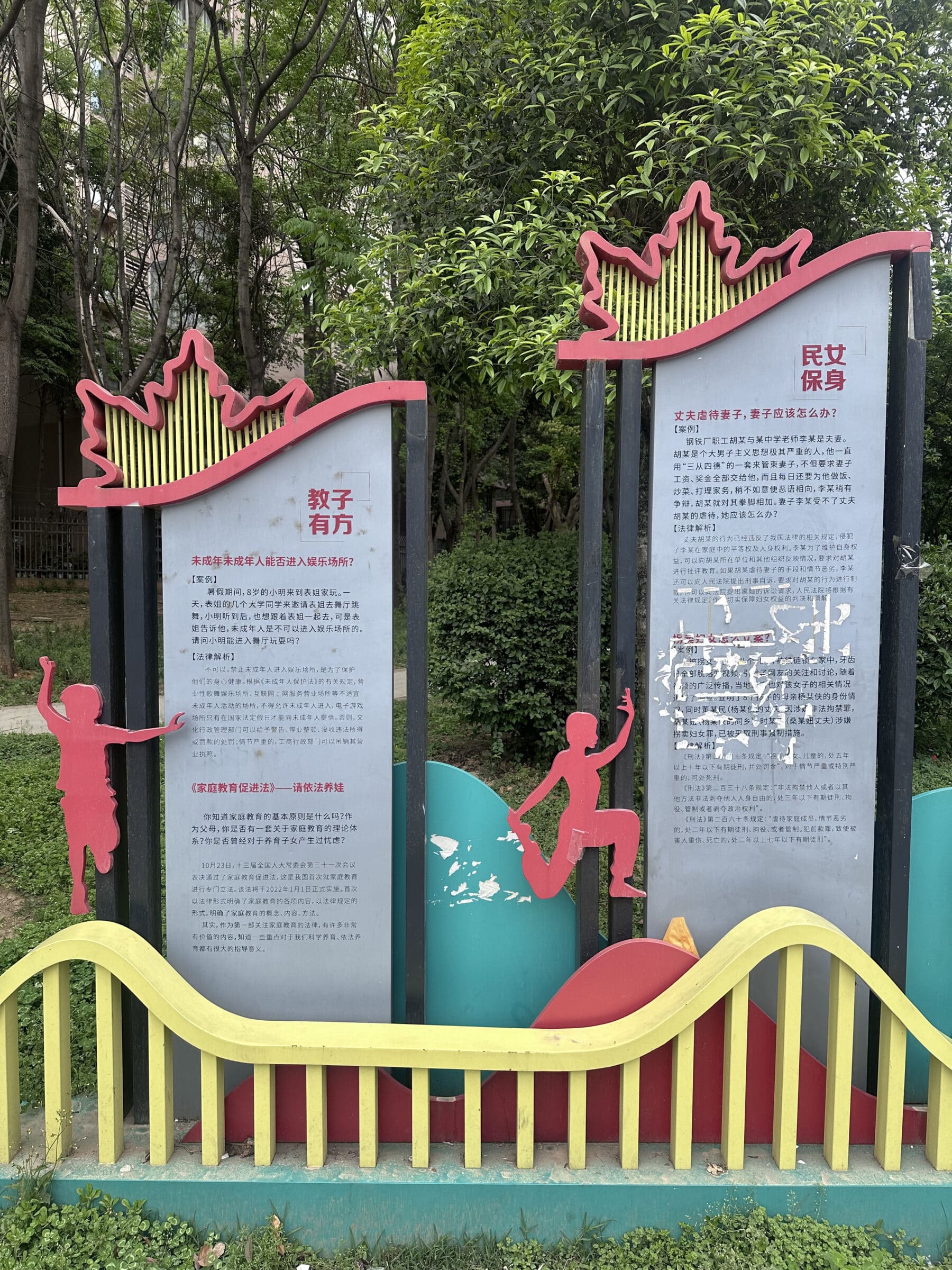
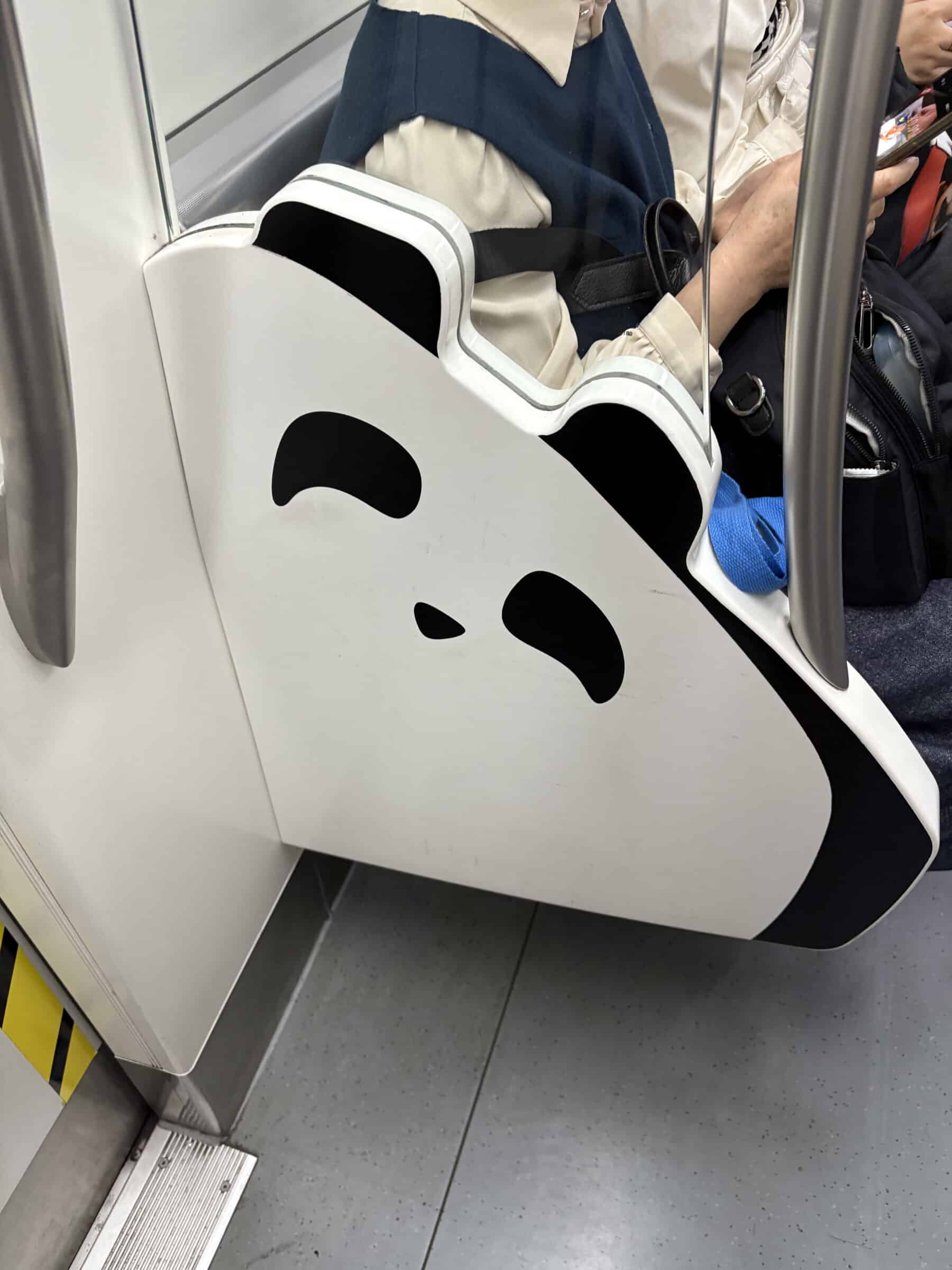
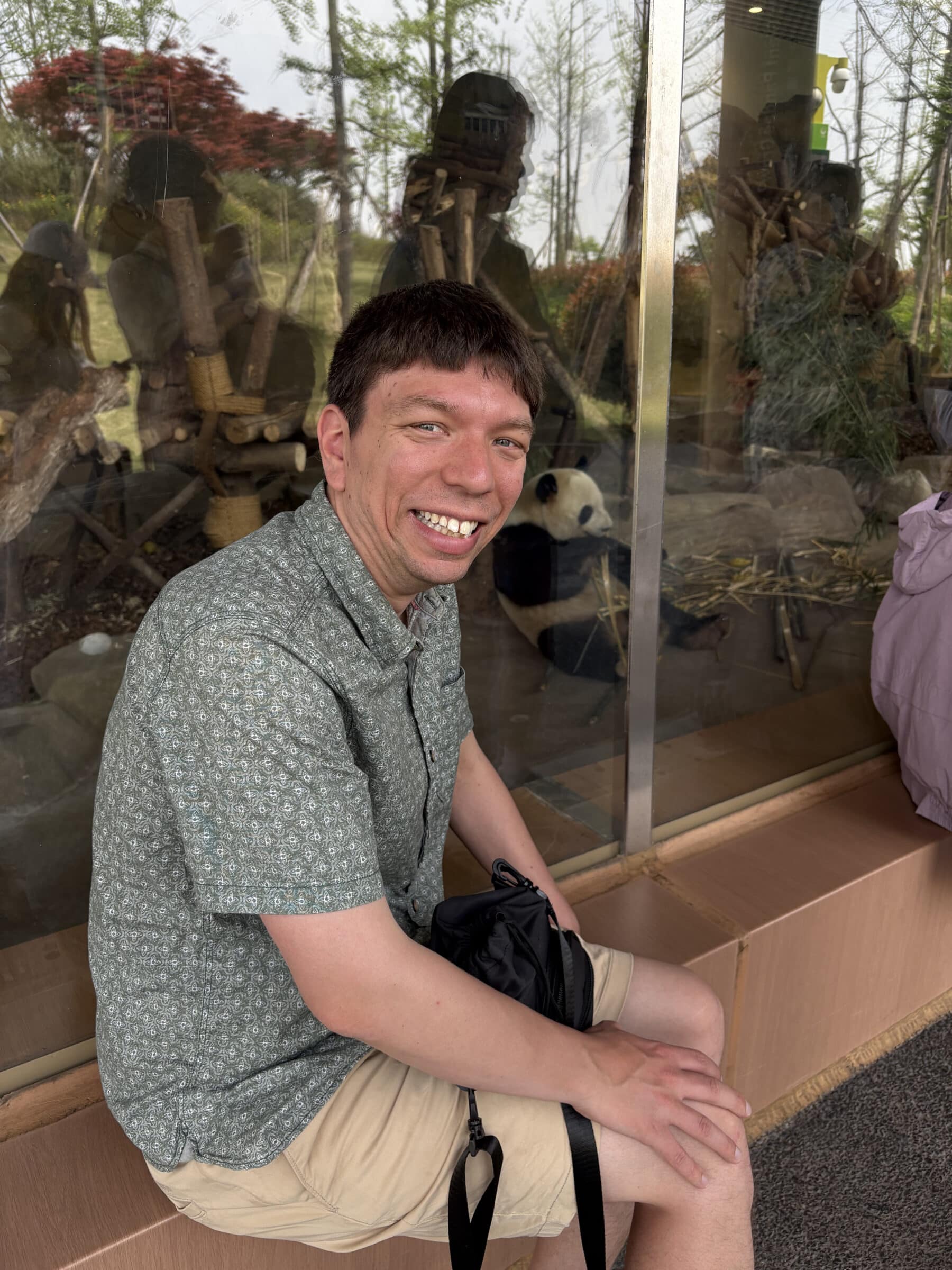
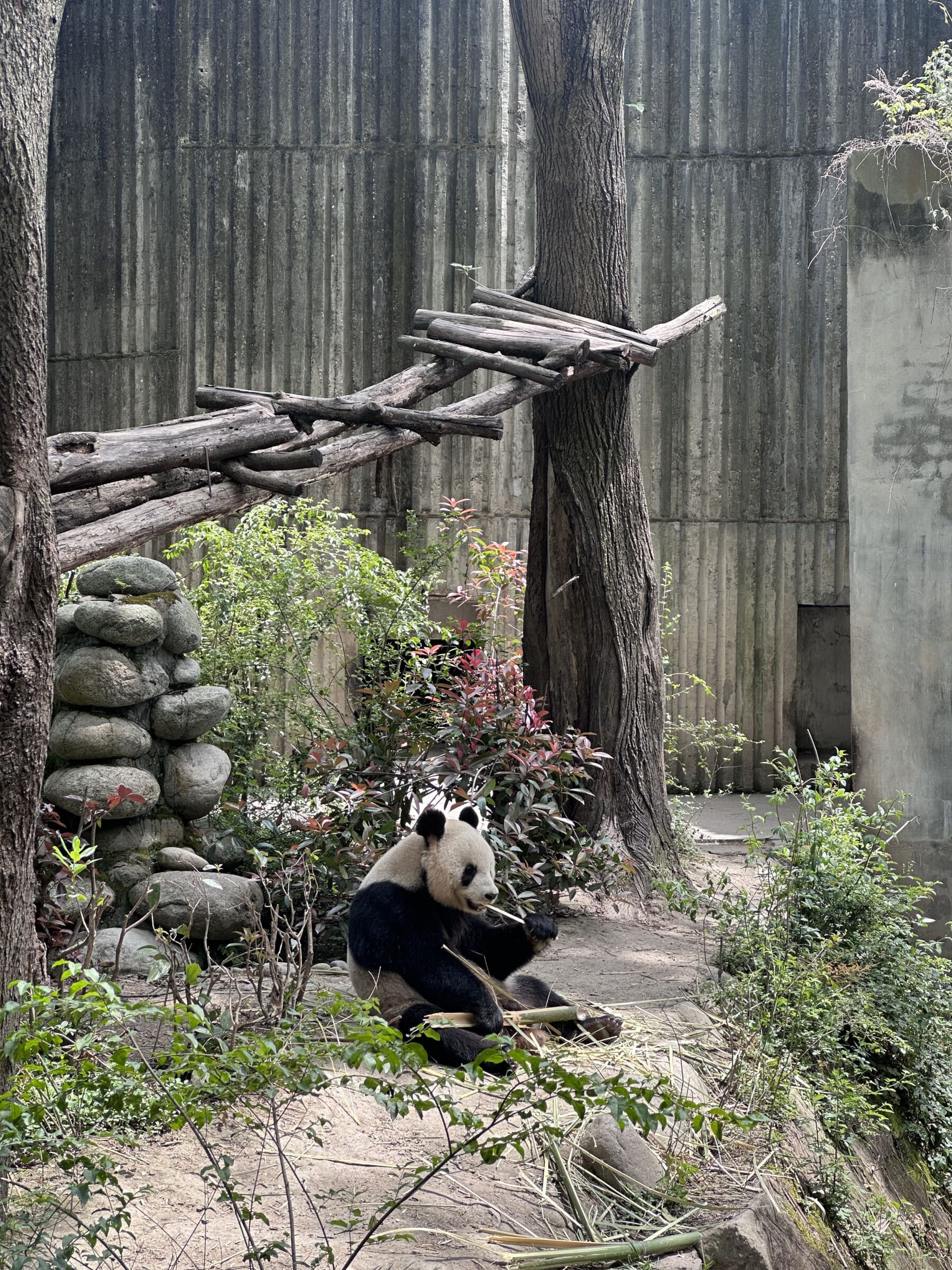
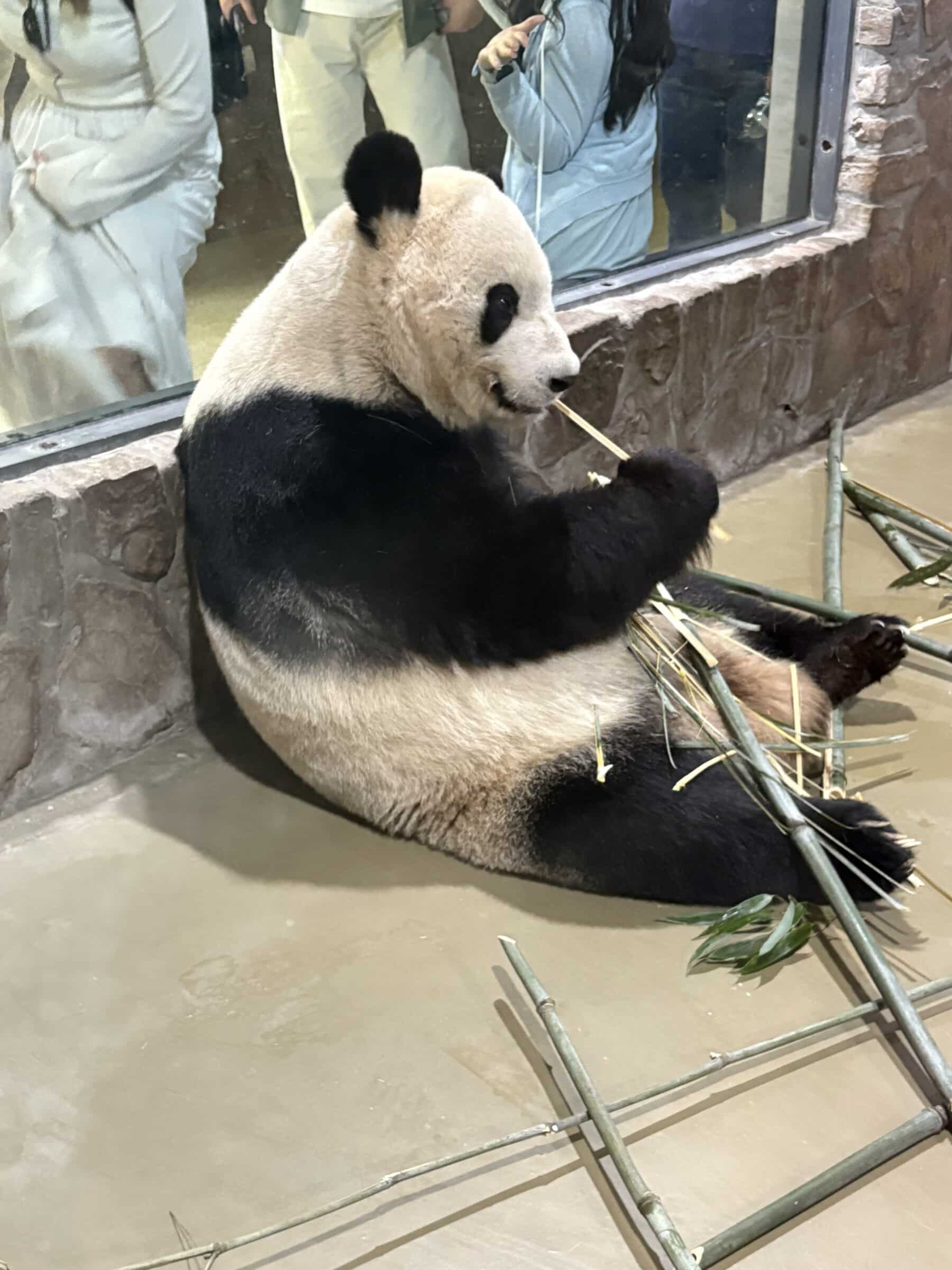

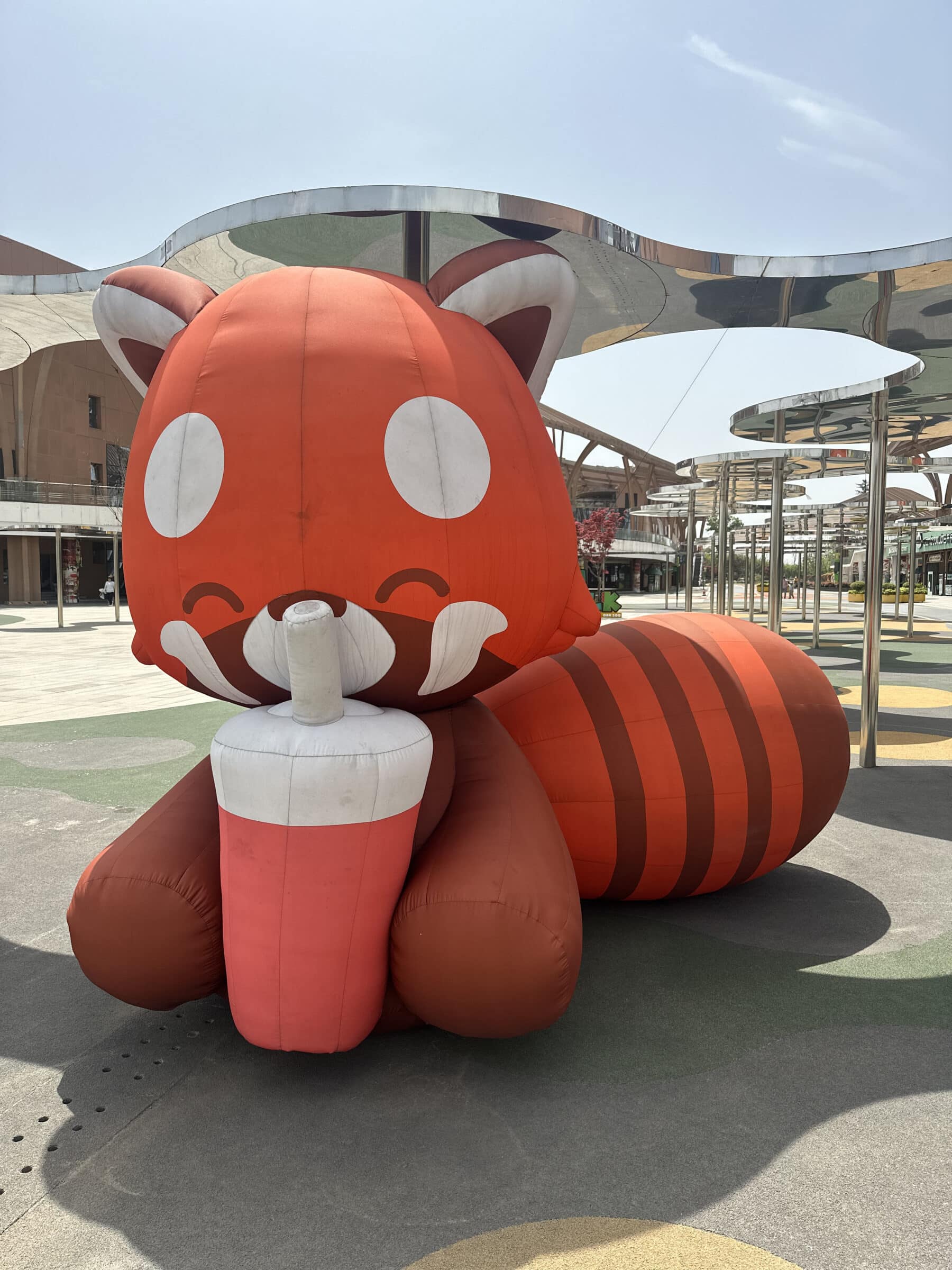
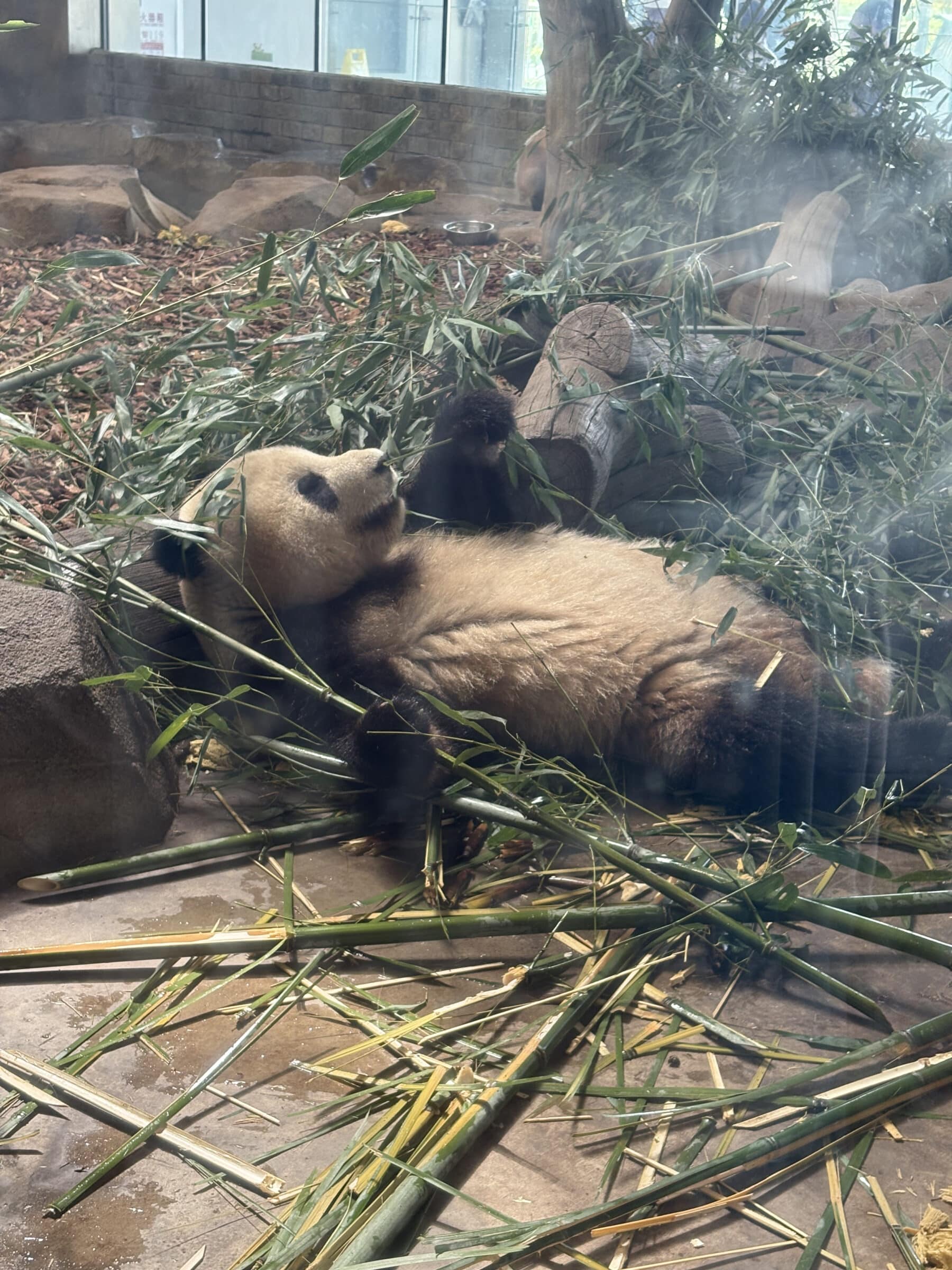







Dom thank you again for such an amazing blog. We loved seeing China through your eyes.